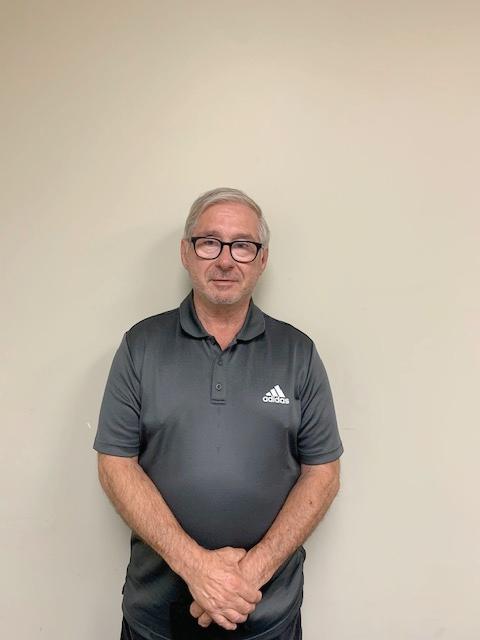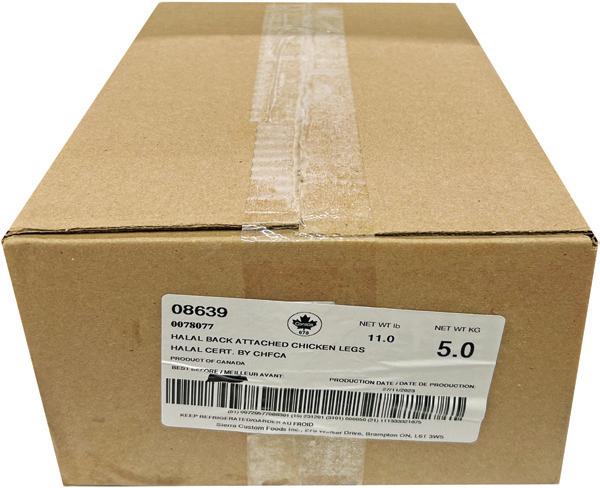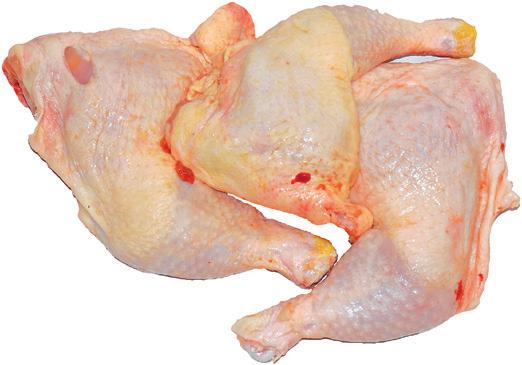









“While initiatives like Bell Let’s Talk and government-funded programs have brought the topic into sharper focus, a significant gap in care persists... ”













“While initiatives like Bell Let’s Talk and government-funded programs have brought the topic into sharper focus, a significant gap in care persists... ”


formerly known as Sillla
For this silky songstress, the sky’s the limit!
“The world is for you; take it!” Have you ever truly listened to someone’s story? Not just heard the words, but felt the weight of their experiences, the texture of their emotions, the unique way they see the world? In those moments of deep listening, something extraordinary happens. A bridge is built, a connection forged, and a tiny piece of their soul is shared with yours.
When we dare to not only listen, but to amplify those voices, to share those stories with the world, we ignite a ripple effect of understanding. We offer others a chance to walk in someone else’s shoes, to see the world through a different lens, and perhaps, in doing so, find a new light within ourselves.
The power of her story isn’t just in the telling, it’s in the way it transformed both her and I, reshaping our understanding of the world, one shared experience at a time.
Community. Prepare to be captivated. This week we celebrate a woman whose very presence is a melody, a whisper of silk against the skin. Her voice, an angelic caress, capable of soothing the most troubled soul. Her style? Sensual, woven with threads of confidence and allure; always giving a lot, but not too much.
This award-winning Afro-fusion, R&B, and soul artist, recently crowned Best Ghana Canada Act 2024, doesn’t just sing – she emotes. Her music, a potent elixir of self-love, resilience, and raw emotional depth, draws its power from the rich soil of her African heritage. Sillasky’s evolution, her renaming, is more than a simple change; it’s a metamorphosis, a butterfly emerging with wings painted in vibrant Afrobeat hues, ready to soar.
She blends soulful melodies with rhythms that pulse like a heartbeat, creating a connection that transcends language and touches the very core of our being. Prepare to be enchanted, enthralled, and empowered by the magic that is Sillasky.
Born in Scarborough, Ontario, Canada, and raised in Pickering, Sillasky will tell you proudly that she was raised as an African young woman. “I lived in Ghana from the age of three years old to eight, and when my parents moved back from Africa, they went right into the suburbs.”
“I watched them work very hard. They showed my siblings and I the importance of aiming high. My parents both worked a lot because they were both en-
trepreneurs, which meant that my older sister had to take on the responsibility of a caregiver. Growing up in that vibration has made me do the things I do.”
There is always that pivotal moment or experience from someone’s childhood that sparks their passion. Sillasky shares hers.
“It was my sister who got me into music. I was introduced to old school R&B when I was really young, and then my family would go to African parties, and I would hear our type of music there.”
“From the time I can remember, I enjoyed singing; I would copy what I heard. My first cd’s were Lil Bow Wow, and Alicia Keys’ first album. I fell in love with ‘Falling.’ The first time I performed was in grade six. I used to sing a lot of Brandy songs, but I had to do a project, and I chose to sing Indie Arie’s song ‘Video.’ It was empowering for me. After I performed that song, people were like, ‘That was good!’ My first competition was Pickering Idol. I got second place, but people kept coming up to me to tell me that I should have won. I remember this one time that my sister and I went to a mall in Barrie Mall, and they had a talent show there. I won. That win gave me the confidence to keep going.”
With that confidence, Sillasky began to open up herself to singing opportunities; you know weddings, events, mostly covers, but a change was coming, and this change happened when she went on a special trip to Ghana with her family.
“It was the one time we traveled together. It was one of my most memorable trips. My older brother brought me to a studio, and I met Jayso who happens to be a very popular producer. He gave me a beat and told me to do something with it. I went home, and was like, ‘What am I going to do?” This was how “Fantasy” was born. Jayso was blown away by what I had done, and when I brought it back to Canada, everyone loved it. My evolution continued; now I knew I was able to write my own music.”
During all of this, Sillasky got married, had some beautiful, baby girls, and had to deal with aches and pains that come with being human. At some points, her faith was tested.
“I started to do worship leadership at church, and unfortunately, I couldn’t continue because I sang secular music. I was forced to choose. I took a step back, and that was when my song “Thank you” came to be. I had this talent, I was there, sitting at home, with my daugh-

ters. I looked at them, and I wanted them to see that they could do anything. That song was dedicated to my children.”
“Four years ago, I had to do something that was very hard; I had to separate from my husband. It became very hard to juggle everything. After my separation, things changed dramatically in my career. I learned how to surround myself with people who were going to support me. It is important to keep good energy around you.”
“I began to perform more, and I wanted to work on my craft and get better. “Lonely” is the biggest song that I have ever released. It is what made me glow up and grow up. I appreciate that song, because it was about being vulnerable. People really took to this song, and someone offered to do a complimentary video. The real shock came when I heard my song on the radio. I was like, how did it get there?
One of the most recent evolutions was Sillasky’s name change. Once I heard her story, it all made sense.
“As an artist, I have wanted to evolve. I lost my sister last year; it really hit me hard. It reminded me of the grief I felt over my father’s death.”
“I was now the founder of Destined Serenity Entertainment. I now had the ability to uplift emerging talent and create platforms that celebrate Black excellence and diversity. This was when I realized that I was now a businesswoman. Since starting DSE, I have had the chance to put together some extremely successful events, and it allowed me to see that the Sky’s the limit.”
“In this industry, you have to keep your head up. I was grateful beyond words when I received the Best Ghana Canada Act Award last year. I was flown to New York, and now I was seeing how my efforts had paid off. I am still learning, and I educate myself daily. I will always remember something my dad used to say, ‘The world is for you; take it!’ I had to distinguish myself as an artist.”
Sillasky ended our talk with some advice for young African/Caribbean artists who are trying to find their voice,
“Don’t be so hard on yourself; be authentic and let God guide you!”





In June 2024, a 14-year-old boy was charged with first-degree murder in Etobicoke in relation to a mass shooting that left two dead and three injured. The victims had been playing soccer and dominoes, according to one victim’s daughter and widow. The same month, a 15-year-old boy stabbed another 15-year-old after an argument on a TTC bus.
“We are in a crisis,” said Solange Scott, president of the Ontario Secondary School Teachers’ Federation (OSSTF) professional student services personnel to reporters in July 2024. “It is abnormal for a 14-yearold to be charged with first-degree murder.”
In December 2022, eight girls between the ages of 13 and 16 were charged with manslaughter in the swarming death of Kenneth Lee, who was living in Toronto’s shelter system.
Violent youth crime jumped by five per cent across Canada in 2022, according to Statistics Canada. Eighteen of the youth charged with violent crime that year were in Toronto — nearly a quarter of all accused and up from just three the year before.
In our busy life schedules, parents rarely get time to spend quality time with
children and that is why children have to engage with: televisions, computers, smartphones, tablets etc. A lot of us have no idea or can even imagine how dangerous it is for tech-savvy children, the imperfect blend of technology and human resource. Children are unable to differentiate between fact and fantasy, and this is why television and social media have created a dangerous environment for children in the modern world. The curated and often unrealistic portrayals of life on social media have begun to negatively impact children’s self-esteem and mental health.
In an article written by Dr. Preeti Deka titled “The Influence Of Media Violence Among The Teenagers And The Youths: Special Reference To Guwahati City (Assam),” she notes that modern society cannot live without mass media and it depends on the user to what extent it is being used. Unfortunately, the days of the television signing off are long gone, and our children have access to media 24 hours a day, seven days a week. Increased exposure to media violence has become normalized, desensitizing children to its harmful effects.
Media violence is so dangerous that it can even claim the life of a human being. Several studies have indicated that most of the violence we see amongst our young people is in direct correlation to interactive video games, TV programs, and films.
Constant repetitions of violence in the media makes people jaded towards violence. The reaction becomes less prominent. As consumers of media, we have become used to seeing explosions, blood and
guts, and mayhem on a regular basis. It has led to the desensitization that I mentioned earlier.
Desensitization is a great example of classic conditioning. The first time a person views a violent act in the media they may react strongly, like they would if the violence was occurring in real life. After consuming visuals like this over a prolonged period of time, people are less provoked and shocked by the: blood, guts and gore.
One of the reasons desensitization can be dangerous is because it is so closely related to the pleasure of watching television, or movies. “The act of watching TV is an unlearned pleasurable behavior,” Dr Deka shares in her article. “When you combine that pleasure with violent images and content then the person begins to associate the pleasure of watching television with the consumption of violent media. Images that might have initiated a negative response before, now give the viewer a sense of calm because of its link to relaxation.”
Feelings of aggression, anger and hallucinations are rising sharply among adolescents in the U.S. and India. According to a new study, the increase is linked to the progressively younger age at which children are acquiring cell phones.
The report was based on data from 10,475 adolescents ages 13-17 in the U.S. and India, with roughly 5,000 teens from each country.
The teens completed an online survey about 47 aspects of their mental health which the researchers called “mind health” and well-being. The authors compared the teens’ results with those of adults.
They identified three trends in the data.
• “There is a “generational decline” in mind health and well-being affecting younger and younger people, the authors said. “The trend is particularly pronounced in girls,” the authors said, “where 65% are distressed or struggling in a manner that substantially impairs their ability to function effectively in the world and would be of clinical concern”
• Nearly half of the teens ages 13-17 who completed the survey said they felt a sense of being detached from reality. Thirteen-year-olds reported markedly increased feelings of aggression toward others, hallucinations, anger and irritability compared with 17-year-olds. “This suggests that these problems are rising in younger adolescents,” the authors wrote.
• The age at which a child, or teen receives a smartphone likely affects the person’s level of aggression, anger and irritability.
The authors acknowledged that it’s “still not yet fully clear” how getting a cellphone at a younger age contributes to a rise in anger, aggression and hallucination. “We urge parents at the very least to delay giving their child a smartphone until at least 8th grade or age 13 so as to give them more time to develop healthier social skills and reduce tendencies for anger and aggression.” Something for parents to definitely keep in mind.










The Business of Mainstream Media: Profits Over Truth
Mainstream media is a money-making machine fueled by viewership. More eyes mean more advertising dollars, driving profits. But the truth doesn’t always sell—sensationalism, controversy, and fear do. So, instead of simply reporting news, media companies craft stories to maximize engagement.
A Partial Truth is Still a Lie
Media outlets don’t always lie outright—that would be illegal. Instead, they selectively present facts that align with their agenda or serve those funding them, like governments, corporations, or interest groups.
Take a protest, for example. If it fits the media’s preferred narrative, the coverage highlights peaceful demonstrators and their cause. If it doesn’t, the focus shifts to chaos, arrests, and violence. Same event, two completely different portrayals.
Bias isn’t just about what’s reported— it’s about what’s left out. The untold stories, ignored facts, and silenced voices matter just as much as the headlines.
The Death of Balanced Reporting
It wasn’t always like this. Until 2011, Canadian regulations required fair and balanced reporting. Section 19(1) of the Television Broadcasting Regulations ensured media couldn’t push one-sided narratives.
That changed when the Harper government repealed the regulation. Without the legal obligation for balanced reporting, media companies leaned into bias, prioritizing narratives that kept audiences engaged. Over time, partisan storytelling replaced objective journalism.
Today, opinion pieces masquerade as news, headlines are designed for outrage, and reporting is tailored to provoke emotional responses rather than inform.
Emotion Over Information
Instead of providing facts, media outlets manipulate emotions. They don’t just report events; they tell you how to feel about them. They reinforce existing biases, dividing people into opposing camps.
Studies on confirmation bias show that people seek out news that aligns with their beliefs while ignoring facts that challenge them. Media outlets exploit this by tailoring content to specific audiences.
Social media only makes this worse, trapping people in echo chambers where algorithms feed them content that reinforces their opinions, filtering out opposing viewpoints. This creates a cycle where audiences consume only what they already believe.
Misinformation: The Monster Media Created Mainstream media and governments constantly warn about misinformation, often blaming it on social media or labeling it a “right-wing” problem.
But the truth is, mainstream media started the misinformation trend.
By abandoning balanced reporting and embracing bias, they destroyed public trust. People turned to independent media, alternative sources, and social media for different perspectives. Instead of acknowledging their role in this shift, mainstream outlets now demonize those who seek news outside their control.
Understanding and Supporting Each Other
In this divisive media landscape, we must be more understanding of each other. Disagreeing with someone doesn’t mean they’re wrong—it may just mean they’ve been misinformed. And misinformation isn’t just a social media issue; it’s been a mainstream media problem for years.
Rather than attacking each other, we should engage in open discussions. Instead of reacting emotionally, we should ask questions: Where did this information come from? Who benefits from this narrative? Is there another perspective?
Media thrives on division. The more we argue, the more engaged we are, and the more they profit. But real progress comes from questioning narratives, seeking full stories, and thinking critically.
Malcolm X Warned Us
This isn’t a new phenomenon. Malcolm X saw it decades ago:
“The media’s the most powerful entity on earth. They have the power to make the innocent guilty and to make the guilty innocent, and that’s power. Because they control the minds of the masses.”
Media doesn’t just shape perception— it shapes reality. It decides which issues are urgent and which are ignored. It turns heroes into villains and villains into heroes. And in doing so, it controls public opinion.
The Role of the Toronto Caribbean Newspaper At the Toronto Caribbean Newspaper, we refuse to play this game. Our goal isn’t to push an agenda—it’s to give people the full picture. Even when our reporting aligns with mainstream narratives, we still examine both sides.
True journalism isn’t about reinforcing one perspective; it’s about presenting all perspectives so the audience can make informed decisions. In a world where media profits from division, we believe seeking truth is more important than ever.
The Solution? Think for Yourself
Mainstream media won’t change—there’s too much money and power at stake. But individuals can take back control of their own minds.
We must stop feeding the outrage machine and start questioning the narratives we’re given. An informed public is the one thing those in power fear most. If we want real change, we need to think for ourselves.
Large (17, 000 sq.ft.) residential plot in quiet serene area. Located in the St. George parish of Barbados, yet only 10 – 15 minutes to Bridgetown, the capital. This is a cul-de -Sac, elevated location that lends itself to great panoramic views of the island and surrounded by eloquent homes that are substantial in size.
Call 011-44- 078 9552 2961 Email mayerj45@yahoo.com

















simone@carib101.com
“Many consumers might assume that the drugs they see all the time on TV are for cutting-edge therapies that are groundbreaking advances over the other treatment options on the market. Our study suggests that assumption is usually wrong. Heavily advertised drugs often do not necessarily provide meaningful therapeutic benefits as opposed to other therapeutic options.”
Neeraj Patel
“My joints ache... my back throbs... my sleep eludes me... my energy is a distant memory... and oh, the heartburn!”
“But wait! There’s hope!”
“Hope? Is it real?”
“Indeed. Introducing Rahisapan, the revolutionary breakthrough that can significantly reduce joint pain! ...improve sleep

quality! ...boost energy levels! ...and banish that pesky heartburn!”
“Minor side effects may include... dizziness... nausea... insomnia... and in rare cases, spontaneous combustion.”
There was a time that we would only see infomercials after midnight, and it was usually for some miracle item that was going to make your entire life easier. As the years went by, we began to see these time slots increase, and then pharmaceutical products began to headline, slowly pushing mostly useless products to the side.
This is where the media manipulation increased. We started to see more and more direct-to-consumer ads being recycled, each one offering a miracle cure, a cure that always involves more and more artificial remedies for unnaturally manufactured problems.
There has been a lot in the news about President-elect Donald Trump circulating the mainstream airways, and most are doing their job, which is to trigger each and every viewer, polarizing them for future use. Today, we are going to focus on aspects of his presidency that are not highlighted but are important to our health and wellbeing.
When President-elect Donald Trump’s nominee to lead the U.S. Department of Health and Human Services (HHS), Robert F. Kennedy Jr. (RFK Jr.), was running as a presidential candidate, he made a promise to ban the ads through an executive order on his first day in office.
President Trump supported this, and for some time has criticized drugmakers and big food companies, saying they “Have engaged in deception, misinformation, and disinformation.”
Critics say the ads “Misinform patients and underemphasize treatment risks,” in part because they don’t provide all the information a patient needs to make an informed decision. The ads also lead to unnecessary drug prescriptions, which reports indicate raise healthcare costs for consumers and taxpayers.
Where was the genesis of this slippery slope? Under the Clinton administration in 1997, the FDA relaxed its policies, allowing drugmakers to list only “major risks” in their ads, paving the way for a new and massive wave of television advertising for prescription drugs.
Spending on ads shot up 330% between 1996 and 2005, reaching $4.2 billion by 2004, and continued to grow
after that. Between 2016 and 2018, drugmakers spent $17.8 billion on ads for more than 550 drugs. Most of these drugs treat chronic medical conditions like arthritis, diabetes and depression.
Companies said such a ban would “almost certainly” lead to a drop in drug sales, according to a recent report by industry research firm Intron Health, which claims the return on investment for drug ads is as high as 100%-500%, depending on the drug.
While a complete ban on directto-consumer (DTC) drug advertising may prove elusive, consumers must become discerning health advocates. We must prioritize critical thinking and independent research. Remember the wisdom of our 102-year-old contributor: “Eat well, take your Vitamin C, and stay active.” These timeless tenets of wellness remain paramount.
Ultimately, our health lies in our own hands. By educating ourselves, questioning information, and prioritizing preventive measures, we can navigate the complexities of the pharmaceutical landscape and make informed decisions about our well-being.
“A City of Belonging.” AstroSankofa celebrates three years of artistic expression in Toronto
SYDNEE WALCOTT
sydnee@carib101.com
TC REPORTER
For the third consecutive year, AstroSankofa Arts Initiative collaborated with the Toronto Transit Commission (TTC) to showcase the talents of six local Black artists who created artwork dedicated to six Black community leaders within the city under this year’s theme, “A City of Belonging.”
The Director of AstroSankofa, Quentin VerCetty, said this year’s theme came from the inspiration of recognizing the unprecedented time the world is in relating to politics, world affairs, and uncertainty of where things are going. This led to the idea and conversation relating to Afrofuturism on being reinforced and celebrating that Toronto is a city of belonging and a place where Black people have been, belong and have been trailblazers for a very long time.
“For the unforeseen future, we hope to continue to be trendsetters and be more part of the decision-making process,” said VerCetty.
The theme of belonging led to the conversation of thinking about the community leaders who have worked towards letting it be known that Black people belong in the city and deserve better treatment and recognition. Here are the six Black community leaders who fit the theme through their work:
Louis March
For the late March, who is VerCetty’s un-
cle, it was really important for him to recognize there are parts of the city where gun violence is not an issue and people don’t have to worry about being robbed or hit by stray bullets. March looked into how neighborhoods that don’t have these issues can use resources to better serve predominantly Black neighbourhoods that have issues with gun violence. He also wanted people to understand if they recognize that Black people do belong, they’re less likely to commit violence against one another. March was instrumental in successfully realizing there are solutions through his Zero Gun Movement.
Dr. Akua Benjamin
Dr. Benjamin is the one who coined the term ‘anti-Black racism,’ which is acknowledged within and outside of Toronto. She is an educator who looked at how systemic racism affected people from education to the grassroot community. She did a lot of foundational work in terms of the city itself, such as adopting anti-racism policies. Dr. Benjamin’s work helps people address the ways that Black people were not allowed to feel a sense of belonging at work or in the city.
Debbie Douglas
Douglas continues to do phenomenal work with helping newcomers, specifically women, become integrated within the city. She also made tremendous strides working with first and second generation women and at-risk youth who don’t come from families who have a long legacy in the city.
Adonis Huggins
Huggins has done outstanding work within and beyond Regent Park. Huggins has an organization (Regent Park Focus) which allows youth to express
themselves through film and media. The opportunity allows youth to understand they don’t need to limit themselves, or their imagination to their area, or circumstances and are encouraged to create opportunities for themselves despite being marginalized. Huggins has become a groundbreaking mentor to some of the great filmmakers to come from the city.
Angela Robertson
Robertson is an amazing women’s and LGBTQ+ advocate. She is the Executive Director of the Parkdale Queen West Community Centre and works with those who are on those margins in terms of gender equality and health as it relates to accessibility. They deserve care and to be treated better no matter their gender, or orientation.
Colleen Russell-Rawlins
Russell-Rawlins was the first Black woman to be the Director of the Toronto District School Board (TDSB). Her work in terms of pushing excellence amongst students within the board has led to ground-breaking results in recent years. The dropout rate for high school students, specifically Black students, has decreased because of support systems implemented to help students receive their diploma and further their studies in post-secondary.
VerCetty noted it was really important to showcase artwork that reflects the work AstroSankofa does as a whole and express why the initiative exists. The purpose of the initiative’s existence is to: celebrate artists within the public atmosphere, celebrate Black artistic excellence in the city and country, and to expand the imagination of the general public through: Afrofuturism, through different elements, symbolisms, and different
ways the portraits are made.
VerCetty encourages onlookers to see how the six Black community leaders are being represented in ways that were never seen from before. The vibrant work of arts that has different historical references with layers of symbolisms that all speaks to tell the story of the people being honoured. The art should inspire people that they can also achieve great things in the city and help to make the city a better place for belonging.
Jamera DaCosta is one of the six artists who was part of this initiative. DaCosta has been working with AstroSankofa for the past year as a collective artist. When presented with the opportunity to be a featured artist for the collaborative initiative between AstroSankofa and the TTC, she said “Yes!” For DaCosta, being part of a project like this is about creating change and spreading messages.
The six figures and their families are grateful for the honour. March knew a piece would be made in his honour before his passing. Although the honour would’ve left him speechless, being considered as an honour would be a huge compliment to the work he’s been doing throughout the years. March’s son and widow had asked for a signed autographed copy of the artwork and said it means a lot to see March being represented in such a way. Russell-Rawlins, who also wanted a copy of the work, and Robertson were both filled with tears of joy at the unveiling and were moved by the work. Huggins was flabbergasted and continuously looked at the work at the unveiling.
The artwork can be seen on six TTC buses and six station installations will be displayed across the city. Throughout the month of February, there will also be walking tours to see the artwork.

simone@carib101.com
TC REPORTER
Headaches pound, sleep eludes, hearts flutter erratically – a litany of physical distress that doctors often struggle to diagnose. There is a silent epidemic sweeping across the globe, afflicting millions with an invisible yet agonizing array of symptoms. The culprit? Electromagnetic radiation, a ubiquitous byproduct of our modern, wireless world.
While we embrace the convenience of our devices, a growing chorus of voices argue that the very standards designed to protect us, some dating back to a time before the sleek smartphones and pervasive Wi-Fi of today, are woefully inadequate. Are we sleepwalking into a public health crisis, sacrificing our well-being at the altar of technological advancement? The question hangs heavy in the air, a chilling reminder that the invisible waves that connect us may also be slowly, insidiously, harming us.
Electromagnetic radiation (EMR) is closely related to human life and origi-
BY ADRIAN REECE
TORONTO CARIBBEAN REPORTER
The COVID years saw international scandals plaguing communities all around the world. Haiti, in particular, experienced the assassination of their president, and to this day, they are still without proper leadership. The political state of the country is in shambles. Robenson Lauvince, the Director and Founder of Clear Shot Entertainment, has taken it upon himself to document the ordeal in his new film July 7th. Sitting down with Lauvince after watching the trailer showed the heaviness of the ordeal; the dramatic build-up to the inevitable end that we all know is coming left much to the imagination while still weighing the extreme seriousness of the event.
Lauvince is a storyteller, through his medium of film, he seeks to reveal to the

nates from various electrical systems, such as: mobile phones, microwave ovens, communication base stations, high-voltage lines, electronic instruments and other electromagnetic equipment. EMR produces various electromagnetic waves of different frequencies, resulting in the increasing EMR intensity in human living spaces.
In an article titled, “Effects of Radiofrequency Electromagnetic Radiation on Neurotransmitters in the Brain,” researchers highlight the fact that with the rapid development of electronic information in the past 30 years, technical achievements based on electromagnetism have been widely used in various fields pertaining to human production and life. Consequently, electromagnetic radiation (EMR) has become a substantial new pollution source in modern civilization, and the biological effects of EMR have attracted considerable attention worldwide. The possible interaction of EMR with human organs, especially the brain, is currently where the most attention is focused. Many studies have shown that the nervous system is also an important target organ system sensitive to EMR.
During my research, I also found an article titled, “Impact of Non-Ionizing Electromagnetic Radiation on Male Infertility: An assessment of the mechanism and consequences,” where researchers reveal that rapid technological advancement have resulted in emission of electromagnetic radiations of different frequency which impacts human both
world the truth of his beloved country Haiti. By using his talents, he can relay the realities of life to those outside of the island. July 7th is simply the latest in telling the truth about Haiti to the world. By telling these stories, he hopes to cultivate a culture of unity across the black diaspora. His films fulfill a couple of objectives, they entertain but they also educate people. Being able to draw themes from the material is important, it highlights the skill of the director of the film. Lauvince has these attributes in spades; by adding cultural elements and driving home these themes into the story, we receive a fuller understanding of the culture that surrounds the events of his films and July 7th will host the very same things in it.
This film was particularly stressful to make, diving into a huge political scandal like the assassination of a world leader is something that makes headlines all over the world.
biologically as well as genetically. Devices like cell phones, power lines and monitors emit electromagnetic radiation and are a major source of the exposure. Numerous studies describe the detrimental consequence of radiation on physiological parameters of male reproductive system including sperm parameters (morphology, motility, and viability), metabolism and genomic (DNA) instability.
In their study, the researchers noted that EM radiation is emitted from commonly used electronic gadgets (laptop, mobile phone), Wi-Fi as well as from cell phone towers. These radiations may affect normal functioning of various biological systems and the male reproductive system in particular. However, the extent of the negative effect of radiation on male fertility varies depending on exposure time.
According to a press release issued by the OneName Project, EMR Syndrome is a “New unifying name for a 21st-century health crisis.”
“OneName Project” brought together: people living with EMR-related disabilities, leading wireless radiation experts, safe technology advocates and medical professionals to choose one term — a simple, non-stigmatizing term — to label illness from exposure to wireless radiation and electromagnetic fields.
“This decision was the result of a truly collaborative process,” said organizing committee member Kent Chamberlin, Ph.D.
The heaviness of this project weighed on the shoulders of the Clearshot Entertainment director. He faced the stresses of internal and external pressures. Lauvince firmly believes that telling these real stories is important in order to bring together the knowledge, and information that can help the people of the diaspora come together.
History has shown us that these kinds of stories can be censored at certain levels due to the industry standards making a case that people aren’t ready to receive this type of information. Through channels and connections Clear Shot Entertainment has been able to push the information of his film as far and wide as he possibly can. The people of the diaspora have the ability to view this film and support his efforts in spreading around necessary information.
The importance of this film lies in its
“We’ve not only created a unified identity for this condition, but also a renewed sense of hope for those living with it.”
Dr Chamberlin is past chair and professor emeritus of Electrical and Computer Engineering at the University of New Hampshire. He served on the New Hampshire Commission to Study The Environmental and Health Effects of Evolving 5G Technology, a team of independent experts convened by the state to answer questions about the impacts and safety of cell towers and wireless radiation. He is now president of the Environmental Health Trust (EHT).
People who have EMR Syndrome and their allies are now working to ensure that EMR Syndrome is formally recognized by global organizations, such as the World Health Organization. They are also exposing what can be done to help prevent it.
Cities can pass ordinances that require cell towers to be at least 1,640 feet from homes, businesses and schools.
• Public awareness of EMR Syndrome can boost these efforts — and help people live healthier lives. Awareness of wireless radiation can be applied as lifestyle medicine provided that patients are motivated and willing to reduce their in-home exposure.
Knowledge is powerful, but applied knowledge is imperative.
reality. A major historical event that affects the lives of millions of people nationwide and internationally, is something that people should know about. Within the scope of knowledge Lauvince has the ability to do many things, one of those things is to bring awareness to the struggles of Haiti, and to unite people of colour in shared experiences and understanding. People of colour need to know the struggle that exists and impacts all of us. Lauvince gives people the ability to connect those feelings across communities, cultures, and countries through his artistic medium and his company Clear Shot Entertainment. July 7th will reflect the intricacies of Lauvinces’ objectives and bring together the unification of the minds of peoples and expose them to information that is dynamic and impactful.
Pauline Christian, Executive Director of EFCC states “We celebrate as a community, we push for Black excellence, we encourage resilience and fight for justice.”
There were nine scholarships awarded to several outstanding students. Their names are:
• Lauren Gilbert: She plans to study Pediatric Therapy at Oakwood University
• Tahlia Burton: She plans on pursuing Gynecology
It was an: empowering, inspiring and entertaining experience for those who attended the 2025 Educational Foundation and Children’s Care Canada (EFCCC)/ MLK Connexus Awards on Saturday, January 18th, 2025. The theme for the annual fundraising show and celebration was, “Unshaken, Unbroken and Unstoppable.” It was held at the spacious Canada Event Centre located in Whitby, Ontario. In many ways the recognition, acknowledgement and honoring of exemplary community leaders brought focus to a quote from MLK Jr., “Life’s most persistent and urgent question is, what are you doing for others.?”
• Paige Hurton: She plans on studying Philosophy and Political Science and then to become a Policy Analyst
• Shae St. Rose: She will be pursuing a career in Physical Therapy
• Daniel Rowe: He intends to become an advocate for equity through teaching and policing
• Adriano Sherwood: She plans to become a lawyer and reform the justice system
• Keiden Thompson: He intends to start a business in sustainable refrigeration
• Jhordana Donaldson
• Rochelle Thompson
There were several MLK Community Leaders honoured that night. The community leaders include:
• Dr. Gervan Fearon (President of George Brown College, former President and Vice-Chancellor of Brock University)
• Tonya Williams (Canadian actress and producer, known for role as Dr. Olivia on “The Young and Restless”)
• Celia Chambers-Meikle (CPA, CA, Licensed Public Accountant)
• Nicholas Marcus Thompson (Human Rights Advocate and Executive Director of the Black Class Action Secretariat)
• Spider Jones (Canadian journalist, author and former amateur boxer and radio personality)
• Dr. Johnny G. Mack (Former Administrator at the Martin Luther King Centre in Atlanta, Georgia)
• Ron Cunningham (Founder and CEO of Citizen for the Advancement of Community Development)
• Reverend Dr. Wendell Gibbs (Pastor of First Baptist Church in Toronto)
• Pastor Mathew Feeley (Minister at New Life Adventist Church in Oshawa, Canada)
• Pastor Lovethpatra Ekufu
Dr. Mack spoke about the importance of honouring Dr. King’s vision where he envisioned a “world house.” He mentioned that the triple evils of: “Poverty, racism and militarism” need to be overcome which involves “Promoting dignity, liberty, and community.”
The event was beautifully hosted by Pastor Judith James of Revival Times Tabernacle. She is the Founder and President of the Beautiful Foundation.
There was a powerful poem titled, “Pathology of a Pandemic,” read by Canute Lawrence. For Lawrence, “Poetry is a powerful tool that can inspire, empower and effect change in mindset and behavior.”
There were performances by: Sharon Riley and the Faith Choral, the Crawford Adventist Academy Choir and the Next Generation Choir. The event culminated with a powerful speech by Dr. Mack. He concluded his speech by posing an important question, “What will we do when we leave here tonight? The work of justice and equity is far from finished.”
For a second consecutive year, access to mental health and substance use health services received failing, or poor grades

“It’s time for governments to accelerate their response to what is important to the people of Canada and invest now to improve outcomes for those looking for help.”
Anthony Esposti, CAMIMH Co-Chair
I want to live in a country where an emphasis on prevention means that fewer mental health problems develop. A country where problems are detected and treated early— with the benefit of a full range of psychological services that are fully funded by the public purse. A country where fewer people are sidelined from the workforce in the prime of their career. A country that leads not just in word, but in deed.
In today’s hyper-connected world, a cacophony of voices clamours for our attention. From the constant scroll of social media to the 24-hour news cycle that floods us with stories of: Trump, tariffs, and what Kanye West’s wife is wearing, distractions abound, vying for our time and focus.
Amidst this digital deluge, a critical issue, often relegated to the background noise despite its prevalence, continues to silently erode the well-being of Canadians: mental health. While initiatives like Bell Let’s Talk and government-funded programs have brought the topic into sharper focus, a significant gap in care persists. This deficit isn’t due to a lack of resources or awareness, but rather, a pervasive distraction fostered by the very media that should be amplifying the conversation. We’ve become so engrossed in the noise that we’ve lost sight of the silent struggles happening all around us, leaving a critical need unaddressed and countless individuals without the support they desperately require.
For the second consecutive year, mental health and substance use health services across Canada have received failing grades, highlighting the persistent gaps in access to care and the lack of substantial progress by provincial and federal governments.
Overall, Canada’s mental health grades have seen little change over the past year, with only the governments of: British Columbia, Manitoba and Ontario improving their rates from ‘F’ to ‘D’, while only
Nova Scotians rated access to substance use health services as slightly better than last year (from ‘F’ to ‘D’).
According to the latest National Report Card survey from the Canadian Alliance on Mental Illness and Mental Health (CAMIMH), six of nine provinces and the federal government received a failing grade of F, raising alarms about their lack of action, and Canada’s ability to meet the growing demand for mental health and substance use health care services.
While British Columbia, Manitoba and Ontario have shown slight improvements and received marginally passing grades for mental health (D), the overall picture remains bleak despite the majority of Canadians expressing dissatisfaction and demanding action:
• Nine-in-ten Canadians (90%) consider timely access to mental health care services to be important, with two-thirds (67%) rating it as “very important”– yet there has been no meaningful progress made since last year.
• The majority of Canadians (83%) believe their provincial government must hire more mental health providers to address this gap.
• Canadians feel governments are not doing enough to evaluate whether current mental health and substance use health services are working.
• Timely access to substance use health services is increasingly important
An estimated 21% of Canada’s population will meet the criteria for a substance use disorder or addictions in their lifetime. The report also found that three-quarters (75%) of Canadians believe access to substance use health services is important, with 46% saying this is very important, up slightly from last year’s survey. A similar proportion (73%) believe it is important for the government to support access to education for the health workforce on substance use.
A notable 64% believe access to substance use health services should be on par with access to mental, or physical health care, reflecting a growing recognition of the need for parity in care delivery.
The survey findings reflect Canada’s chronic underfunding of mental health and substance use health services. Provinces allocate only 6% of their total health budget to mental health care—in stark contrast to other G7 nations like: France (15%), Germany (11%) and the United Kingdom (9%) and CAMIMH’s call for 12%. There is a clear need for improvement.
The consequences of this systematic underinvestment are devastating:
• Untreated mental illness costs the Canadian economy an estimated $50 billion annually.
• More than 1 in 2 Canadians struggling with mental health say they are not receiving the help they need.
• Canada continues to face a substance use crisis, with an average of 20 opioidrelated deaths occurring each day.
The results leave no room for complacency and Canadians have made their priorities clear:
• Governments must increase public investments to improve timely access to effective mental health and substance use health services.
• Hiring more mental health and substance use health providers is essential to address shortages and ensure Canadians get the help they need when they need it.
• Parity between mental health, substance use health and physical health services must be enshrined in federal legislation with targeted funding.
I had an opportunity to speak with Anthony Esposti, CAMIMH Co-Chair, and he was eager to share his thoughts with me.
“The pandemic had an enormous impact on our mental health,” Anthony began. “Now more than ever, people are in need of substance use health. Our generation never went through something like this. Households were locked up with each other in isolation, which is not good for anyone. Some of us found ways to cope during the pandemic, and some of us did not. Regardless, there has been no investment in improving our mental health programs, and most of them remain largely underfunded.”
I had noted in the report that underfunding was a major barrier.
“All in all, 5% of Canada’s budget goes to mental health. Other countries put in 10 - 14%. Although there is funding, it is not enough. The reality is that when the community attempts to use these services, there are high wait lists. There are high level quality services, unfortunately, these wait lists continue to grow. So, people resort to going to the emergency, which is an expensive way to deliver health care.”
“Place the money in the hands of service community providers. They do a lot with very little. They are able to deliver the service very efficiently. We are talking about an equitable solution.”
“What are the psychological impacts of working in a chronically underfunded and under-resourced mental health
system on healthcare providers,” I asked?
“With an overwhelmed system, you end up with overwhelmed people. You have a group of professionals who want so desperately to help and are not given the tools to do so. It creates a lot of frustration. The equity and pay is way off kilter, and well below physical care. Underpaid, overworked does not make a happy system. The system is not designed to support the people they serve.”
“It is deadly! Our mental health has an incredible impact on our physical health. When services are not being provided the whole person suffers. We need to recognize that there is a disproportionate impact for equity seeking groups especially when it comes to access to services.”
The Canadian Mental Health Association (CMHA) Toronto has just launched a new, free grief support program. The program fills a gap in bereavement provisions available in the city, removing the barriers to accessing psychological treatment in a country experiencing an alarming increase in mental health issues, without proper infrastructure in place.
The program offers a variety of services designed to help participants navigate their grief and build resilience. Through this program, CMHA Toronto offers workshops and grief support groups that focus on emotional regulation, healing, and building resilience. The program includes two grief seminars, followed by dedicated support groups tailored to the individual’s specific needs:
• Survivors of Suicide Loss – Weekly for 6 sessions
• Grief Recovery After a Substance Passing (GRASP) – Weekly for 4 sessions
• Adult Education Support Group (Loss of Mother/Father/Sibling/Friend/ Grandparent) – Bi-weekly for 6 sessions
• Parents of Older Children – Weekly for 5 sessions
• Loss of Client/Compassion Fatigue – Biweekly for 4 sessions
• Spousal Grief Group – Weekly for 4 sessions
CMHA Toronto’s Grief Support Program is available online and in-person across the Greater Toronto Area. Everyone is welcome and no referral from a doctor is necessary. Explore this further by visiting https:// cmhato.org/programs/grief-support-program/
Until mental health is understood as being of equal importance to physical wellness, we have work to do. The parity we seek goes above and beyond just dollars and cents. Mental illness is legitimate and treatable and must be respected as such.

Is Steven Guilbeault the Environment

MICHAEL THOMAS
michael@carib101.com
TC REPORTER
or is he just sitting in
change, agenda-driven plans. Plans to remove all gasoline vehicles from the road, plans to develop 15-minute cities, plans to kill farming which in turn will bring on food shortages, and finally famine.
Guilbeault has admitted that he is in close contact with Carbon Tax Carney and from the way he praises him, Canada can expect climate wonders from its Environment Minister. Here is what he revealed.
“The short answer to your question is yes. I have spoken with him. and I’m confident that by working together with other members of the Liberal Caucus and membership, we can come up with a plan that will ensure that Canada achieves its climate goals.”
It has become quite clear now that this so-called Carbon Tax scheme is just another way, or another avenue for the Liberal government to introduce all their climate

“Guilbeault is responsible for leading the charge to quadruple the carbon tax to 61 cents per liter by 2030. On top of this, Guilbeault even threatened to quit Trudeau’s cabinet if the Liberals gave any more carbon tax carve-outs. He will never let the carbon tax die on his watch,” A political source revealed.
Canadians might want to take a closer look at the ideas of the man called Mark Carney and realize that this is who Steven Guilbeault their Environment Minister is taking advice from. With this overview, they will know what to expect from Guilbeault, but first let’s take a look at who Guilbeault really is.
“I’m a Liberal and a proud socialist, Mr. Speaker,” said Environment Minister Steven Guilbeault during the question period. When confronted on his ideas Guilbeault got very defensive, went on a rant, and even used former Prime Minister Stephen Harper
as an example. “This reminds me of a certain Prime Minister Stephen Harper who talked about the fight against climate change as a socialist plot.”
Speaking of his political rivals he said, “They do not believe that climate change is an issue. They do not believe we should do anything about it. They oppose the electrification of transportation. They oppose deals like Volkswagen stalintis and Norvo. They oppose wind development off the shores of Newfoundland and Nova Scotia. They have no plan to fight climate change, no plan for the economy. They have no plan for the future of Canada.”
Here are some quotes from Mark Carney (Carbon Tax Carney), “One thing we will also have again, if we are to accomplish what we need, is that there will be for some time a rising price of carbon either explicitly for a long period of time, or implicitly through regulation that has the effect of the steady increase in the price of carbon, and that is akin to having a rising value added tax over time. It can be done. I think the central banks are able to anticipate, and with credible and predictable climate policy, it is
easier to address. There are lots of reasons why you need credible and predictable climate policy for a green new deal.”
When it comes to policies there is not much difference between Guilbeault and Mark Carney. Almost every word spoken by Guilbeault mirrors the man whose so-called climate policy he admires. “As long as I’m the Environment Minister, there will be no more exemptions to carbon pricing,” Guilbeault told The Canadian Press in an interview.
As for Guilbeault threatening to quit his party over any more carbon tax carve-outs, Canadians should know the answer to this bluff. Power-hungry, control freaks never quit, usually they are forced out. Just ask Justin Trudeau. Has anyone noticed how these climate change liars never want to debate any genuine climate expert?
The huge question here is whether Canadians can survive the barrage of carbon taxes that are levied and will continue to be levied upon them as a people. How long will Canadians put up with these cash grabs placed on them by these globalist puppets posing as public servants.
simone@carib101.com
“The First Five Episodes of New Series Watson are Now Available for Screening…” I’m sorry what? This article is specifically for my 90’s, 2000 babies who know exactly who I am talking about when I yell, “RICKY!”
Remember Morris Chestnut? If you were a moviegoer in the 90’s and 2000’s, you definitely do. This tall, handsome, and incredibly versatile actor burst onto the scene playing Ricky in the iconic Boyz n the Hood (1991). He was the high school running back trying to use his football skills to escape the harsh realities of his neighborhood, a stark contrast to his half-brother, played by Ice
Cube, whose motivations were different.
Chestnut quickly proved he was more than just a promising newcomer. He tackled a lead role in the powerful Civil Rights drama The Ernest Green Story (1993), portraying the courage and resilience of one of the Arkansas Nine. He then showcased his range, moving between action-packed films like: Under Siege 2: Dark Territory (1995), G.I. Jane (1997), and Half Past Dead (2002), and the charm of romantic comedies such as: The Best Man (1999), The Brothers (2001), Two Can Play That Game (2001), and Breakin’ All the Rules (2004). He even took on creature features with Anacondas: The Hunt for the Blood Orchid (2004) and the drama of Ladder 49 (2004).
For centuries, the name Sherlock Holmes has conjured images of brilliant deduction, breathtaking chases, and the unraveling of the most perplexing crimes, but behind the world’s only consulting detective… stood another. A man of science, a man of unwavering loyalty, a man… underestimated. Prepare to witness the reinvention of an icon! Morris Chestnut IS…Watson!
Not just any Watson. This is Pittsburgh Watson. A Watson armed with Sherlock’s fortune and a parting gift – a blueprint for a medical clinic specializing in the bizarre, the baffling, the downright undiagnosable.
Watson’s team? A hand-picked group of medical mavericks, each possessing a unique blend of brilliance and eccentricity. Their mission? To crack the codes of the human body, to decipher the whispers of disease, to solve the medical mysteries that leave other doctors scratching their heads.
Adding a touch of personal intrigue, and may I say, drama? Cases referred by none other than his ex-wife, Dr. Mary Morstan, Chief of Staff at Pittsburgh’s most prestigious hospital. Talk about keeping things professional… and complicated.
So, forget the deerstalker and the pipe. This is a new era. I am not going to reveal any of the plot, or a surprise you will appreciate at the end; you are going to have to watch the show.
There was a special premiere on
January 26th, and Watson will continue with its next new episode on Sunday, February 16th, at 10 pm ET/PT on CBS, which will be its regular time slot. In order to watch Watson live you need access to your local CBS station, which is available through traditional pay-TV providers, TV antennas, or select live TV streaming services (Fubo, Hulu with Live TV, YouTube TV). You can also sign up for Paramount Plus to watch the show. Opting for Paramount Plus with Showtime allows you to watch it on the platform as it airs live, though all Paramount Plus options will let you watch the show on-demand the day after it airs on CBS.
This is Watson unleashed. Get ready for medical mysteries, witty banter, and a whole lot of… “Elementary, my dear doctors!”
Yes! That’s right. Morris Chestnut. Playing… Dr. John Watson. Sherlock’s… best friend. We know. Let it sink in. It’s… unexpected. Trust us. It’s going to be… diagnostically brilliant.

The announcement in a press release issued on Monday, January 27th, 2025, by the City of Brampton of a new Youth Wellness Hub in Brampton is exciting news for youth. It will add to the network of 22 hubs that have been established in Ontario since 2020 and will culminate in a total of 22. They provide a range of services geared to youth and families which include mental health, substance abuse and wellness. The press release notes that the diverse services provided will create a comprehensive support system that will serve as a multi-use hub for youth and families in Brampton.
There were additional details about the new Youth Wellness hub in the press release. The conception and design of it results from consultation with local youth and youth service providers. Some aspects of the design include:
• Construction of a new 12,500 squarefoot building with youth-centric design
• Features such as: games and e-sports areas, creative spaces, meeting rooms and spaces for organizations to deliver a variety of services to youth and more
• Outdoor amenities including: an amphitheatre, community gardens, a basketball court and the Atiba Hutchinson Soccer Court
• A new public installation by a professional, Ontario-based Indigenous-identifying artist, or artist group under the age of 29 years old
There have been several endorsements of this project by civic leaders and other officials. Patrick Brown, Mayor of Brampton
states, “Home to more than 153,000 youth aged 14 to 29 years old, the City of Brampton is dedicated to building a brighter future for our young people through compassion and innovation. This partnership with Peel Children’s Aid Society embodies a comprehensive approach to addressing the needs of youth in our community. By creating a space that integrates mental health services, recreational opportunities and educational support, we are ensuring that every young person has access to the tools and resources they need to succeed.”
MPP Charmaine Williams, Associate Minister of Women’s Social and Economic Opportunity states, “The establishment of the new Youth Wellness Hub in Brampton is a milestone in supporting the mental health of young people in our community. As a local MPP, I am thrilled to see it come to life. This initiative reflects our commitment to ensuring our youth have access to culturally responsive, accessible services, empowering them to overcome challenges, seize opportunities, and thrive. Our government is proud
to support projects that foster resilience, inclusivity, and wellness for the next generation.”
MPP Graham McGregor, Associate Minister of Auto Theft and Bail Reform states, “This project is about more than just a building; it’s about giving youth in our community the tools to live happier, healthier lives. This was a huge need in our community, and I want to thank our partners, the City of Brampton, and Peel Children’s Aid Society for their collaboration and commitment to making this hub a reality.”
Rowena Santos, Regional Councillor, Wards 1 & 5, Chair of Community Services for the City of Brampton states, “It is an honour to work with all partners. When a young person walks into our Century Gardens Youth Hub for recreation programs, or to just hang out, they will also have access to critical mental health support should they need it. This collaborative approach is an example of what we can achieve together for our youth, providing them with the wraparound support and opportunities they need to succeed.”
“Born To Create” isn’t just an exhibit; it is an immersive experience

SIMONE SMITH
simone@carib101.com
TC REPORTER
Remember the Toronto Caribbean Newspaper Woman Empowered Chika Oh? She is the Toronto-based visual artist and creative visionary, and she’s back and leveling up her game once again!
As I walked through the gallery, the walls seemed to whisper promises of endless possibilities. Chika had imagined her own vibrant canvases hanging proudly, their colours singing in harmony with the carefully curated works of other talented creatives from across the city. This wasn’t just about showcasing her art; it was about building a community, a place where artists could: connect, inspire, and support one another.
Chika shared with me the wave of gratitude that washed over her as she thought of the person who had entrusted her with this space. “It is more than these walls; it is an opportunity to nurture the local art scene, to give voice to the artists whose passion burns bright, but often goes unseen,” Chika shares.
I can almost see her now as she begins to sketch out her vision. The gallery would be a vibrant mixture of styles and mediums, a reflection of the city’s diverse artistic soul. There would be open calls for submissions, venders, workshops to foster creativity, and events that celebrated art in all its forms.
What came next was “Born To Create,” an inspiring month-long gallery exhibit and curated event series in honor of Black History Month 2025. From February 6th to March 2nd, 2025, STACKT market’s North Hall Gallery (28 Bathurst St Toronto) will be transformed into a vibrant hub of African: art, history, culture, and creativity.
As I spoke to Chika and other guests who attended the opening, each expressed that to them “Born To Create” wasn’t just an exhibit; it was an immersive
experience. “Chika has curated a series of events designed to: spark dialogue, celebrate artistry, and foster community,” shared one of her guests.
The Toronto Caribbean Newspaper was invited to the opening night, and this was where the magic began. This special evening was a captivating showcase of artwork, and fashion inspired by African history and its influence on modern culture. Led by the beautiful Shanna-Kay Stephens, with special guest Kim Singh, guests enjoyed a night of bold designs, powerful storytelling, and a palpable sense of inspiration.
The celebration continues throughout February with a diverse range of events:
• February 21st, 2025: Women in Entrepreneurship and Empowerment (Hosted by Femme&Co): This event features a breakout session focused on building sustainable businesses for women, covering accountability, growth, mental wellness, financial strategies, and economic development. An all-women vendor market will showcase brands: Maydn Beauty,
JamaFaceBeauty, Femme&Co, and PNT.
• February 23rd, 2025: Sundae Social: In collaboration with Sundae Social, this lively event will feature art, music, a celebration of life, community connection, food, and market vendors.
• March 2nd, 2025: Creatives Network + Evolution of Black Artistry in Toronto: This two-part event kicks off with a networking session for creatives, followed by a powerful conversation exploring the evolution of Black artistry in Toronto. Attendees will learn about the impact of African history on art and culture and engage with local artists shaping the future. Food and a vendor market will also be available.
“Born To Create” is more than just an exhibit; it’s an invitation. It’s an opportunity to explore how art transcends boundaries, connects communities, and celebrates heritage. Join Chika Oh and the vibrant Toronto arts scene this February and March for a truly unforgettable experience. Tickets can be found at her website Create with Chika Oh.

PAUL JUNOR
paul@carib101.com
TC REPORTER
The issue of violence in Ontario schools has been one that has been a priority for the diverse stakeholders in the education system. On January 22nd, 2025, many leaders of Ontario’s education unions came together for a Safe at School Summit hosted by the Ontario Secondary School Teachers” Federation (OSSTF/FEESO). Details about the summit were released in a press release which was issued on January 23rd, 2025. It includes educators, unions, researchers, children’s mental health experts, disability advocates, principals’ organizations, school board directors, civil society, community leaders, and political decision makers to address the growing crisis of violence in Ontario schools.
Karen Littlewood, President of OSSTF/FEESO states in the press release, “Violence in Ontario’s schools cannot be
normalized. Right now, we are failing students and staff in schools across Ontario as the number of violent incidents continue to increase. We convened the summit, because this crisis requires swift and effective solutions to end the violence, yet the Ford government has so far failed to act. They’ve left us with no choice but to act without them.”
Dawn Hoffman, Principal Researcher at Strategic Communications, Inc. was primarily involved in conducting research over the years that examined the state of violence in Ontario schools. He states in the press release, “Multiple research studies in the past several years by us and others on behalf of several education unions, have demonstrated alarming levels of violence aimed at educators and education workers in Ontario’s schools.”
Hoffman mentions studies conducted on behalf of OSSTF/FEESO, which reveal that thirty percent of OSSTF members have experienced physical force being used against them in the 2022-2023 school year. In addition, Stracom conducted a survey for the Elementary Teachers’ Federation of Ontario (ETFO) that was subsequently released by the University of Ottawa in which education workers revealed that what they are witnessing is an
“epidemic” in Ontario schools. There was the release of a white paper commissioned by the OSSTF/ FEESO that listed several recommendations. At the summit, many participants collectively worked together to develop actionable solutions. Some of the solutions include the following:
• The Minister of Education should create a multi-stakeholder Safe at School Action Table mandated to develop a comprehensive Safe at School Action Plan.
• The Minister of Education should expand funding and eligibility for safe school grants to allow school boards to hire additional qualified staff such as: professional student support personnel, educational assistants, and other education workers in the public education system
• The Minister of Education should create a sector-specific regulation for the education sector under the Occupational Health and Safety Act that considers and addresses the unique nature of education workplaces. The regulation should include the requirement that school board workplace violence and prevention plans and
programs must be developed in consultation with a multi-site Joint Health and Safety Committee
• The Government of Ontario should implement a dedicated tuition waiver to attract students into education programs for education occupations experiencing shortages
• Unions, school boards, and administrators should develop joint campaigns on building non-violent cultures in schools.
The press release concludes with OSSTF/ FEESO urging the government to take immediate action and commit to working collaboratively with Summit participants to make Ontario’s schools safer. A top priority must be the creation of a multi-stakeholder Safe at School Action Table with a mandate to develop a comprehensive Safe at School Action Plan.
President Littlewood states, “This is not just about ending violence; it’s about building schools where every student feels supported, and every staff member feels safe. We’re calling on everyone-from policymakers to parents-to join us in making this vision a reality.”





SIMONE SMITH
simone@carib101.com
This Black History Month, the Toronto Caribbean Newspaper proudly shines a light on the vibrancy of our community. From Brampton’s Black Empowerment Unit celebrating local achievements to the inspiring stories of artists finding solace in Costa Rica’s cloud forests, this edition is a testament to the resilience, creativity, and strength that defines us. Join us as we explore these stories and more, including a powerful new book by Roger O. Williams, in this month’s Community Highlight Section.
City of Brampton’s Black Empowerment Unit honours and celebrates Black History Month in Brampton
This February, the City of Brampton, Black Empowerment Unit invites residents to honour Black History Month by participating in a wide range of events and programs that celebrate the achievements, contributions and legacy of Black Canadians.
AI Made Easy: Bias in AI
Date: February 13th
Time: 6 to 8 pm
Location: Chinguacousy Library (Chinguacousy Park Ski Chalet) 9050 Bramalea Rd.
Join Edwina McKennon from FuturIQ Inc. for a workshop that demystifies artificial intelligence and may revolutionize your work and everyday life. Suitable for beginners and those curious about practical AI applications. Registration required.
The Black Actors Film Guild Canada’s Annual Convention and the Canadian Black Screen Awards
Date: February 15th
Time: 3 to 9:30 pm
Location: Brampton City Hall Conservatory, 2 Wellington St. W.
The Black Actors and Film Guild Canada is holding their Annual Convention during Black History Month to bring together stakeholders, industry leaders and creatives to foster collaboration, mentorship and growth. There will be guest speakers, insightful panel discussions and networking opportunities. The evening will close with the distribution of the Canadian Black Screen Awards. The Awards celebrate and recognize Black excellence in the arts, culture, and community service and are given to outstanding individ-
uals categories, including filmmakers, actors, musicians and performing artists.
BEC: Brampton Startup Youth Huddle
Date: February 18th
Time: 6 to 8 pm
Location: Brampton Four Corners Library, 65 Queen St. E.
In celebration of Black History Month, we are proud to feature two distinguished entrepreneurs from the Black community: Marc Goode, a Technical Project Manager and Agile Business Coach and Christine Diaz, a seasoned technology and business professional with an MBA in Business and Entrepreneurship. Free tickets available on Eventbrite.
Brampton Tech Talks: Highlighting Black Entrepreneurs
Date: February 20th
Time: 7 to 8:30 pm
Location: Springdale Library, 10705 Bramalea Rd.
The Economic Development Office will host a discussion spotlighting success stories from Black-owned businesses in Brampton. Panelists will share their journeys, the challenges they’ve faced and the support systems that have helped drive their success.
Pan-African Flag Raising
Date: February 21st
Time: 12 to 1 pm
Location: Ken Whillans Square, 41 Main St. S.
Soulful Creations – A Celebration of Black Art and Cuisine
Date: February 21
Time: 5 to 8 pm
Location: Susan Fennell Sportsplex Youth Hub, 500 Ray Lawson Blvd.
Youth are invited to celebrate Black culture through an immersive experience of art and cuisine in this engaging community event. Savour authentic meals inspired by Black cuisine and create unique artwork inspired by renowned Black artists. All materials will be provided – registration is required and will open one week before the event.
Black History Month Career Expo
Date: February 25th
Time: 3 to 7 pm
Location: Century Gardens Recreation Centre, 340 Vodden, St. E.
Tales Woven in Hair: A Braiding Workshop
Date: February 25th
Time: 6 to 8 pm
Location: Gore Meadows Library, 10150 The Gore Rd.
Dive into the use of braids as a means of resistance with Lishaina Leach. Attendees will
learn about historical braiding styles and have a chance to create their own braid art at the event. Registration required. Learn more and register here.
Brampton Fire and Emergency Services
For the third year in a row, Brampton Fire and Emergency Services (BFES) will honour the many achievements and contributions of the Black community. BFES will have a dedicated fire truck showcasing the contributions from the Black community that helped shape the international fire service, serving as a learning and education opportunity for the Brampton community.
Ontario Opening Homelessness and Addiction Recovery Treatment Hub in Brampton
$529 million record investment will create a total of 27 new HART hubs across Ontario
The Ontario government is helping create safer communities and supporting people struggling with addiction and mental health issues in Brampton by building a new Homelessness and Addiction Recovery Treatment (HART) Hub. This new hub is part of the province’s plan to support safer communities by investing $529 million to create a total of 27 HART Hubs across the province while also banning drug injection sites from operating within 200 metres of schools and licensed child-care centres.
HART Hubs, similar to existing hub models in Ontario that have successfully provided people with care, will reflect regional priorities by connecting people with complex needs to comprehensive treatment and preventative services. Planning efforts to create the HART Hub in Brampton are underway and the proposed services to be offered could include:
• Primary and psychiatric care
• Mental health and addictions services such as assessment, brief treatment, counselling, structured psychotherapy, Rapid Access Addiction Medicine, detox, addictions medicine prescription
• Mental health and addictions supportive housing and shelter/ transitional beds
• Case management for social assistance, employment finding services
• Diversion supports
The 18 new HART hub’s locations, including in Brampton, were chosen as a result of a provincewide call for proposals last summer. All HART Hubs will have the goal of being operational by April 1, 2025. Earlier this year, the province announced that nine drug injection sites in: Toronto, Ottawa, Hamilton, Kitchener, Guelph and Thunder Bay that are required to close due to being located within 200 metres of a school, or licensed child-care centres have been approved for transition to
a HART Hub. This brings the total number of HART Hubs across the province to 27, eight more than initially planned.
Hotel Belmar Announces Artist Residency Program in March 2025; The Costa Rican ecolodge invites artists to find inspiration in the cloud forests
Ecolodge Hotel Belmar in Costa Rica invites artists from around the world to spend up to three weeks this March being inspired by the breathtaking Monteverde Cloud Forest. The Artist Residency Program runs four times a year and provides artists with room and board, and in some cases, a stipend based on financial need. Open to both Costa Rican and international artists across all mediums, the Artist Residency Program at the carbon neutral boutique property nurtures and inspires artists’ creative journey.
Begun in 2019, the program enriches not only the artists but also hotel guests, staff, and the local community. It brings cultural context to the travel experience, offering guests a deeper appreciation of Monteverde as a destination.
Developed in partnership with his friend Martha Palacio, a Costa Rican artist, musician, and curator, the residency reflects the hotel’s commitment to sustainable tourism and its mission to promote cultural and environmental awareness. Past artists in residence have represented a variety of nationalities and artistic media, showcasing both international and Costa Rican talent. Artists interested in applying can find out more and submit their application, or email Martha Palacio at cultura@hotelbelmar.net. The deadline to apply is February 6th for the March 2025 residency.
The Boy, The Plants & The Animals, by Roger O. Williams
When a group of animals and plants in a Jamaican mesic forest learn that the government of Jamaica has implemented the construction of a major highway that is supposed to run through and destroy their forest home, the helpless animals and plants enlist the help of a twelve-year-old asthmatic orphaned boy.
Clueless as to where to begin, the powerless boy put together a motley crew that includes a Rastafarian callaloo, a mentally disturbed marijuana, a posh rose, a facetious croaking lizard, a warmonger tomboy worker bee, a gentle blackbird, a protester layer chicken, and the boy’s rescued pet dog. With time running out on the forest’s inhabitants, the boy and his ragtag team must devise a solution to stop a multibillion-dollar highway project before the distraught animals and plants lose their natural habitat home forever.

off seeing your dentist for check-ups and teeth cleaning? You could be

W. GIFFORDJONES MD
DIANA GIFFORD-JONES
TC HEALTH COLUMNIST
Have you become lax lately in brushing your teeth? Possibly not flossing as much as before, or putting off seeing your dentist for checkups and teeth cleaning? If you’ve become careless, you could be playing a risky game with your brain. Studies show that older adults suffering from periodontal gum disease, having difficulty chewing food, or missing teeth, have a greater risk of developing dementia.
Gingivitis like other medical problems proves the Gifford-Jones Law that one health problem frequently leads to another.

Gingivitis is the first stage of gum disease, when gums become inflamed by the bacterial plaque buildup on the surface of teeth. If untreated, it progresses to periodontitis, an infection of tissue that supports the teeth.
According to the Academy of Periodontology, more than half of those aged 30 and older have this problem. For those 65 and older, it is 68%, not a minor problem.
Several studies link dental health to dementia. Researchers at the University of Central Lancashire School of Medicine and Dentistry studied 10 brains of those with and without dementia. They discovered the bacteria, Porphyromonas gingivalis, in four of the brains of those with dementia.
Another study of 262,000 people in South Korea aged 50 and older was conducted over a 10-year period, published in the American Geriatrics Society Journal, revealed that those with chronic periodontitis had six percent higher risk of dementia than those without.
A California study followed 5,500 older adults over an 18-year period. They had all their own teeth, but those who did not
brush their teeth daily had a 22 to 65% greater risk of dementia than those who brushed teeth three times a day.
One can assume there is a relationship between oral health habits and dementia, but this research does not conclusively prove that poor oral habits cause dementia. Rather, it’s an interesting association. As one wise sage once remarked, “The sun rises in the morning, and so do we, but this association means nothing!” For instance, it could be the reverse, that impaired cognitive function leads to poor oral health.
Nevertheless, good horse sense should tell us that it’s prudent to brush teeth three times a day. Dental floss should also be used regularly to remove food between teeth.
Many readers will wonder what gingivitis has to do with the brain. The answer is that we simply cannot escape microbes, tiny micro-organisms that invade our bodies and mouths.
Researchers believe that unhealthy microbes and the toxins they produce do not remain in the mouth. Rather, they wander to
other parts of the body including the brain, causing inflammation, and brain injury. Inflammation is not our friend. Researchers have believed for years that low grade chronic inflammation is one of the factors that triggers coronary attack.
Apart from brushing teeth after eating, flossing, and seeing your dentist at regular intervals, how else can you give a boost to oral health? Saliva has antibacterial properties, and a good flow prevents dry mouth. Sip water or chew sugarless gum. You can also give your mouth a boost of good microbes by chewing probiotic gum.
A nitrate-rich diet is also good because nitrates (found in leafy greens, beets, and other vegetables) help certain bacteria in the mouth convert nitrates into nitrites, which then help maintain a healthy balance of oral microbes and contribute to nitric oxide production, which benefits overall health.
With good care you can keep your own teeth for a lifetime. As Don Quixote remarked 400 years ago, “A tooth is more precious than a diamond.”
MICHAEL THOMAS
michael@carib101.com
TC REPORTER
I want to open this article by letting our readers know that I am not endorsing Robert F. Kennedy Junior’s Book “The Wuhan CoverUp.” My mission in this piece is to point out the facts, dive a bit deeper into the rabbit hole, and hopefully do what we at Toronto Caribbean Newspaper have been doing for many years now: shining a bright light in dark corners.
So, Robert F. Kennedy Jr. Has a book called “The Wuhan Cover-Up” and “The Terrifying Bioweapons Arms Race” in which he is said to be exposing the folks behind the COVID-19 scheme and the so-called pandemic.
Here is a short synopsis of what Kennedy has put in print so far. He rehashed the fact that “gain-of-function” experiments are often conducted to deliberately develop highly virulent, easily transmissible pathogens for the purpose of developing preemptive vaccines for animal viruses before they jump to humans.
The starring role that Anthony Fauci played in making sure he evaded guidelines
and protocols so as to bamboozle most of the watchmen and women on watch, and get his agenda going is no easy one. This includes his use of the National Institute of Allergy and Infectious Diseases (aka NIAID) to zealously fund and pursue gain-of-function research.
Even though In 2014, the White House placed a moratorium on gain-of-function research, Fauci found ways to continue undaunted — outsourcing some of the most controversial experiments offshore to China, including providing federal funding to Wuhan Institute of Virology’s (WIV’s) leading researchers for gain-of-function studies in partnership with the Chinese military and the Chinese Communist Party.
Kennedy in his book published what he called the key enablers and henchmen pushing for gain-of-function research and the economic motives behind this type of experimentation. The successfully engineered “chimeric viruses” that can infect and kill humans plus the coordinated efforts to silence speculation of COVID-19’s laboratory genesis.
From the complicity of Scientific Journals to hide the origins of COVID-19, the role of the Wuhan Institute of Virology in China’s biowarfare/biodefense program, the relationships between U.S. health, military and intelligence bureaucracies, and scientists and their Chinese counterparts to the roles of Bill Gates and Sir Jeremy Farrar in helping to orchestrate China’s global cover-up, there is a lot of information covered here.
Most of our long standing readers
can testify that for almost five years now we at Toronto Caribbean Newspaper have been questioning the COVID narrative, and have covered a range of these same topics. When our questions went unanswered, and content was removed from our web pages, we knew that we were dealing with perhaps the largest genocidal project ever implemented by our world governments. For interested parties wanting to explore more of Kennedy’s book “The Wuhan Cover-Up” and “The Terrifying Bioweapons Arms Race”, it can be ordered online.
Speaking of cover ups, Dr. Judy A. Mikovits, who has a BA in chemistry with a specialization in biology, is a woman who knows and has felt the wrath of Fauci and his team at the Health and Human Services, which Fauci has led since 1984. Mikovits was fired and thrown in prison and lost everything many years ago for trying to expose Fauci. Mikovits explains a lot about Fauci in her book “Plague of Corruption.”
That was as promised a short synopsis of Kennedy’s book. Now for a short look at the present position this author aims to hold in the US government as we speak. According to American politics Kennedy is well on his way to becoming the nation’s Health Secretary in Donald Trump’s government. Republicans voted together to advance his nomination, while Democrats all opposed. Kennedy’s nomination now will face a full senate vote, despite concerns about the work he’s done to sow doubts around vaccine safety and his potential to
profit off lawsuits over drugmakers.
If Kennedy becomes the US Health Secretary, he will gain control of the $1.7 trillion Health and Human Services agency, but he still needs the support from three Republicans if Democrats uniformly oppose him. Kennedy described himself as uniquely positioned to “End the chronic disease epidemic” in the United States.
As I listened to Kennedy’s speech to his colleagues, I could hear a man bending over backward to prove that he is not an antivaxxer and that to me seems like someone making atonement for past sins. This left me questioning who the real sinners are. Make of this what you want. This link below shows RFK Jr. In 2022 saying that the vaccine companies knew that the COVID injections would injure and kill many children, yet they injected these children: https:// www.bitchute.com/video/kOgTAaoQRrn4/
Here is a quote from his hearing, “News reports have claimed that I am antivaccine and anti-industry. I am neither, I am pro-safety. I worked for years to raise awareness about the mercury and toxic chemicals in fish and nobody called me antifish. I believe that vaccines play a critical role in health care. All of my kids are vaccinated. I have written many books on vaccines.”
Talk they say is cheap, in the event that Kennedy is confirmed, the real slim shady will certainly have to stand up, and the world would be watching, after all his new boss calls himself “The Father of the Vaccine.”





simone@carib101.com
The biting wind howls outside, rattling the windows of your condo. Another grey, slushy day in the heart of a northern winter. The sun, a distant memory, seems to have abandoned us entirely. Your shoulders slump, the weight of the winter blues pressing down. You needed an escape. A real one.
Your fingers flew across the keyboard, a desperate search for sun, sand, anything but this. Then, you stumbled upon it: an island offering tailor-made tours, a place brimming with history, vibrant culture, and unforgettable personalities. A French overseas department, no less, promises a unique blend of people, culture, and cuisine. Your interest is piqued. Suddenly, you aren’t in your cramped apartment anymore. The roar of the wind is replaced by the gentle lapping of turquoise waves against the shore. Instead of the incessant city noise, you hear
deep blue of the ocean, and the fiery orange of a sunset. You can almost feel the warm, humid air on your skin.
You picture yourself on a secluded beach, the sand warm beneath your feet. The only other being in sight is a pelican, perched majestically on a volcanic rock, fluffing his feathers and gazing northward across the mangroves. He seems as content as you are beginning to feel.
The thought of the food alone is enough to make your mouth water. No more bland winter meals. Instead, you are savouring the flavours of Creole cuisine: blaff de poisson, the delicate poached fish infused with lime and garlic; crispy, golden accras de morue; and the intriguing chatrou. Each dish, a symphony of flavors, accompanied by rich French sauces and exotic curry blends, and the fruit! Forget the imported, tasteless supermarket offerings. Here, you indulge in sun-ripened starfruit, juicy papaya, and the tangy sweetness of passion fruit, all grown organically on the island.
Martinique is calling.

ery moment, and finding the right place to stay are essential.
Villas in Martinique are not just accommodations; they are luxurious havens designed to elevate your relaxation and enhance your experience of the island. Providing spots that exude opulence with a side of leisure, here is curated a list of some of the top villas to choose from, ensuring you feel pampered and indulged.
Antilles Exception
Enjoy Martinique your way with Antilles Exception, offering a staggering 180 villa rentals to choose from. Ranging in price points and destinations across the island, Antilles Exception lets you choose from an array of accommodations that suit your style, from secluded hideaways to breathtaking scenic retreats. Choose from a list of villas that were carefully designed for leisure in desirable destinations like: Le Marin, Tartane, Le Diamant, Le Robert, Sainte Anne, Les Trois-Ilets, Les Anses d’Arlet, Le François, Le Vauclin and Sainte Luce. You can explore your options at www.antillesexception.com/en.
tion of villas that are available and perfect for you. Whether you prefer the South with white sandy beaches, or the North with lush vegetation and UNESCO sites, Villa Veo is determined to give you and your loved ones a memorable stay. Uncover more about Villa Veo at www.villaveo.com/ en/rentals/martinique
Eden Roc and Palm Villa
With exceptional amenities, Eden Roc and Palm Villa offer cutting-edge comfort, transporting you to the high life. These two dream destinations feature sparkling swimming pools, breathtaking sea views, and access to Martinique’s most stunning beaches, providing an idyllic setting with immaculate vistas. They also offer a first breakfast and a welcome drink to ensure your arrival is as peaceful as possible. Unlock the secrets of Eden Roc & Palm Villa at www.villasmartinique.com
You open your eyes… Shoot! Back to reality. What you just imagined wasn’t just a vacation; it was a sensory reset. A chance to trade the drabness of winter for a vibrant, sun-drenched paradise. The grey skies outside all of sudden seem a little less oppressive. This island, this escape, is exactly what you need. You close your eyes again; the image of the pelican and the sound of the waves fill your mind. This wasn’t just a dream; it was a plan. SIMONE SMITH
You are invited to enjoy the volcanic visits and charming French-Caribbean towns of this tropical gem as you explore this remarkable island at your own pace. Picture gentle hikes, snorkeling through bright blue waters and sunset sailing, all complimented by lazy mornings and peaceful evenings by the pool. Enjoying the best of what Martinique has to offer, savouring ev-
Villa Veo
When it comes to weighing your options and choosing a rental, Villa Veo is there for you every step of the way, ensuring a seamless and welcoming experience throughout your holiday. Understanding that Martinique is a multi-faceted island, their experts will personally curate a selec-
Overuse of the internet is a real addiction disorder. Checking and rechecking your electronic devices, like your breathing fresh air may show you have a technological addiction, and does not matter what your age, sex or race maybe, technology can and has acquired your attention greatly.
What can you do to deal with this problem? First recognize you indeed have a problem. Then you can follow a few of these suggestions:
Turn off your alerts: You can ignore your phone if it is not alerting you every other minute. If you cannot miss any alerts no matter how long you wait, pass the phone onto a trusted partner who can take a message for you. Setting your phone into a mode that only alerts you of super important messages is key. Put a rubber band onto the device, there to remind you of your problem,
and the need to plan personal time from technology.
Instead of using the phone as an alarm clock, which could lead you into multi-tasking in the middle of the night, buy a single use alarm clock.
Go cold turkey by staying off for set periods of time.
Plan for tech-free time: Two to three days at a time perhaps. Set rules stating no tech allowed when: eating, sleeping and playing about. Plan some offline fun time. Encourage others to do the same.
Create no phone or tech zones within your home, workplace and community and do not disturb anyone who is participating in tech-free time.
Get rid of apps: They keep an eye upon you, alert you with promotion upon promotion. A silenced electronic device is a money saving device.
Manage all your expectations:
Message expectations that can and do lead people to spend their money, waste their precious time.
Even those who must have their phones on at all times can let the boss know that there is business time and personal time. Don’t let one impose itself upon the other.
The common adage claiming that technology is a tool that will make your life easier and better, is a fool’s expectation and a tech salesperson’s promotional dream. Technology, like all other things can take over your life, transform and manipulate it and not benefit you.
High technology is the pusher man I am speaking of here, and you know what they said in the earlier part of this century right? “God damn the pusher man, he cares not for you, just wants to take your revenue.” Good luck!


The year is 2015. R&B is in the air, and a new star is about to be born. Legendary group Color Me Badd, riding high on the waves of nostalgia, discovers a raw talent, a diamond in the rough… Our Classic Man Adam Emil.
For years, he toured with them, learning the ropes, honing his craft. Then, in 2018, the group disbanded, but for Adam, this wasn’t the end. It was just the beginning.
Combining raw vocal power with electrifying showmanship, Adam ignited stages across the country. His energy was infectious, his presence captivating. Word of mouth spread like wildfire: This wasn’t just a performer; this was an experience. Sharing the stage with giants of music, from hiphop royalty to pop sensations, Adam proved he belonged. He’s now nominated for four Independent Singer Songwriter Association Awards and a Top 5 finalist for the Elite Music Awards’ Breakout Artist of the Year.
Remember “One and Only”? The track that took the independent music scene by storm? The one that won B.E.T.’s “YA HEARD” competition and earned love from top radio DJs? The one that landed a Vh1 Soul music video premiere? Yeah, that Adam Emil. He’s not just a flash in the pan. He’s the real deal.
Adam Emil is back, and he’s bringing the heat with his new track “Enough,” featuring Kordy Blakka. This isn’t just a song; it’s a whole vibe. “Enough” is set to ignite late-night playlists and spark some serious chemistry. Think sultry R&B meets the warmth of tropical melodies, all underpinned by the irresistible pulse of African beats.
From the first note, “Enough” pulls you into a world of passion and undeniable longing. Emil’s smooth vocals weave a tale of love so potent; it lingers long after the music fades. The
infectious groove and evocative lyrics paint a vivid picture of a connection you just can’t shake. This isn’t just a catchy tune; it’s a story, raw and emotionally charged, that connects on a deeper level.
Inspired by legends like: Stevie Wonder, Marvin Gaye, and Bob Marley, Adam crafts music that honours the great. “Enough” proves it. This isn’t just a song; it’s a testament to Adam’s artistry, his passion, and his dedication to creating music that resonates.
I had a chance to catch up with Adam, and it was during our dialogue that I truly learned the fullness of this creative genius…
“I was born in San Benito County, California and moved to Chicago at three years old,” Adam tells me. “I remember that I was very little in the back seat of the car. I saw an airplane go by, and I said, ‘that isn’t the way to Chicago, that’s the way to Chicago.’ We had a lot of family in the area, so it made sense. My family lived on the southside of Chicago for two, or three years, and then in the suburbs of Chicago. What sticks out to me most is just being a kid. It was a different time. I played a lot of sports. I was entrenched in the community. I remember finding glass, and telling someone it was diamonds. It was just having fun.”
Adam shares with me where his love for writing began. “I used to always write love letters. I knew I had skills when my friends asked me to write love letters for their girls. I also played piano along with my sister. I didn’t write my first song until I was 18, but it was easy, because I was always writing poetry.”
Adam explained how the energy of Chicago contributed to his creativity, and what makes it such a special place for him as an artist.
“When you go to the southside
of Chicago, or the westside of Chicago you see fire hydrants with the tops off. People are just outside. As soon as you get off at 87 Street, you will see people selling things right off the ramp.”
“Chicago is very raw. It is hard to impress people in Chicago; I have to admit, it made my skin thicker. It makes you tougher as an artist. When you go to other places, you are always received better. They call artists from Chicago the meat grinders.”
Adam has diverse musical influences, which have influenced the unique sound of his music, and he lays out how it all comes together when he is creating. “Hip Hop would be the drums and heavy bass. R&B goes back to that poetry writing I did: the harmony, ins and outs of the vocal. The Classic Rock element is the songwriting, the story telling. Reggae is the rhythm, the carefreeness of how the vocals are delivered. I borrow a little bit from all genres.”
“I work with more writers now than I ever had in my career. I used to write with my partner Chris G. ‘Trust the process,’ he would tell me. It is not just about the hit. For me it’s: candles, dim lights, and I vibe out. Enter into that place of solitude and peace. You want the most high to take over. It is a rigorous experience. A verse will beat you up, and then you hear something, or feel something. I take my time with the process. It is why my songs are still viable, till this day.”
“Joining Color Me Badd sounds like an incredible experience. What were the biggest lessons you learned from that chapter in your career,” I asked?
“Don’t get too comfortable.” Adam replied. “Being light skinned, Black, and from Chicago, I think at times self-sabotage is a real thing. I see artists enter the industry, their cocki-
ness gets in the way, their ego, and then it’s done. To keep me centered, I would talk to Chris G and my family. There were challenges. Once I got to three years, my spirit said to me three is the point of completion. It was time to move on.”
“Your song ‘Enough’ seems to be a powerful statement. What message do you hope listeners take away from it, and how does this song reflect your own personal journey of self-discovery?”
“I worked with Toxic, and I worked with Tia Williams. I heard the beat, the repetitiveness of the chorus and that was it. It was a vibe. I have a very mature sound, so the song suited me. I loved the lyrics; it is about love.”
At the end of our sit down, Adam shared with me his perspective on music and how the industry has changed since he first started pursuing his career.
“Music is still something we can’t live without. It is the soundtrack of our minds. It communicates with us. Music is a part of who we are. There are people who want to be a part of it but have not opened up their history books. People need to do their research and find appreciation for music.”
From the streets of Chicago to the world stage, Adam Emil, “The New Prince of R&B,” is ready to claim his throne.

Written by Simone J. Smith Toronto Caribbean News

simone@carib101.com
“Love always wins. I want to spread it. I want to show people that God is working in my life.”
MNR Catering stands as a purveyor of luxury Caribbean culinary experiences, specializing in Jamaican and wider Caribbean cuisine. They differentiate themselves through an unwavering commitment to authenticity, using timehonored recipes and the freshest ingredients to create dishes that transport their clients to the heart of the islands. They cater to discerning palates seeking not just a meal, but an immersive cultural experience, offering bespoke menus and unparalleled service for: private events, corporate gatherings, and community celebrations.
On January 5th, 2025, MNR Catering proudly celebrated six years of delivering authentic Caribbean flavours to Toronto and beyond. This milestone represents not just the growth of their business, but also the celebration of Caribbean culture and the communities that have supported them along the way.
MNR Catering is the realization of a lifelong dream for founder and head chef, Michelle Rochester. Growing up immersed in the vibrant culinary traditions of Jamaica, Michelle developed a deep passion for sharing the authentic flavours of her heritage. She envisioned a catering company that would not only showcase the richness and diversity of Caribbean cuisine, but also provide a platform to cel -
ebrate the culture and community that shaped her.
“We want people to say, “ We HAVE to have MNR cater our event!”
about a “defining moment,” a point where they realize, “This is it. This is really happening?” Michelle shares with the Toronto Caribbean News paper when that moment was for her.
ness as a grief and coping mechanism. My grandfa ther died in a car accident. I didn’t grieve. It was very shocking for me. I met some family members at the funeral, and I invited them over for dinner. My grandfather died in September, and then I had them over for thanksgiv ing. They were so impressed, and they en couraged me

to start something that would showcase my cooking. I had doubts of course. December is my grandfather’s birthday, and it was around this time that I said to myself, ‘This is it.’ It was a bittersweet anniversary, but from loss comes great things some -
The relationship that Michelle had with her grandfather was a special one, and for good reason. Her story left me speechless.
“When I wear my chef jacket, I feel so close to him. Who knew it would grow to this. I was in the system from the age of 13 to 21, and my grandparents found me. I went to church one day with my foster
mom, and my grandmother was there, so that was how I was able to connect. They pulled some strings so that they could take me on the weekends. That was when my love for food grew.”
“I actually went to school to study law; cooking was a passion, something that connected me to my family. This business has forced me to grow.”
“The most challenging part was getting my store front, and balancing work. It became so overwhelming, I had to leave the firm because my business was crumbling. If I were to do it again, I wouldn’t do it this way. I would do a lot more research. Like I said, it was a challenge, but I finally opened my store front (462 Dawes Road, East York, Ontario) in May 2023.”
MNR Catering is are not just building a business; they are building a legacy with regular and full catering services:
Taste of Quality: Individual, single dinners. flavour, spices, authentic meals.
Beverly Nelson Bakery: Their specialty: spice buns. “We have been selling them for five years.”
Rochester’s Choice: Event Rental Service: Centerpieces, Floral, Ipad Photo Booth.
All You Can Eat Gala: They are now bringing the importance of taking care of mental health into this unique event. “It is not just about food; we are going to be talking about important topics. Our next one is September 27th, 2025.”
Her advice to someone with a burning passion, but hesitant to take the leap into entrepreneurship, particularly in the food industry. “If you have a burning passion, follow your spirit. If you fail to plan, you plan to fail. Seek guidance from mentors in that industry. See your future self in that person.”
Our staff is familiar with the diverse traditions of the customers we serve. Let us help ensure that your unique preferences are accommodated. Talk to us today and we’ll explain all your funeral options and help you through your immediate or pre-arrangement needs.
















































































































































Whether



























Have you ever walked into a home, or even a single room, and wondered, “How do these people live in such a mess?” Collecting and holding onto too much stuff causes many problems – economic, social, and emotional. It is not a common way to assess your health, but having a look at your home is an interesting diagnostic tool.
“Cluttering” can be expensive. About 11% of American households rent a storage unit at an average monthly cost of $85. Nearly half of self-storage customers rent for a year, or more, costing over a thousand dollars!
Some nationalities are more compulsive about clutter. For instance, Germans and Swedes seem less inclined to pile up unused things. The Swedes have a saying that stresses you should not leave a mess for others to clean up. They call it “death cleaning.”
Studies show that clutter breeds emotional chaos for some people. A study at Princeton University showed that with too much stuff around, the brain is unable to process information well. Another study from the University of California revealed that clutter can have an adverse effect on hormones. For instance, women who live with a mess did not show the normal decrease in the stress hormone, cortisol, that usually occurs during the course of a day. Moreover, they experienced an increase in depressed mood. In some cases, living in a mess means social isolation stemming from the embarrassment of friends not being able to get in the door for all the mess.
A messy home can also lead to falls. Getting older is a dangerous process. Seniors are less agile, and vision deterio-
rates. Tripping over a mess can cause a fractured hip, or other serious injuries.
For messy households, there is nothing like the workload that comes when parents move into retirement homes. This topic doesn’t feature in my new book about Healthy Retirement Residence Living, but that’s my oversight. Fortunately, my own family does not have this problem, but the tales are legendary of families who must sort through room after room of “stuff” collected over a lifetime.
If you’ve decided it’s time to get rid of clutter, there’s good news. Decluttering does make people feel psychologically better. It provides a sense of accomplishment and well-being. Equally important, decluttering gives people a sense of personal control, lowering stress.
If getting rid of clutter is good for you, why don’t more people do it? There are lots of reasons. Are people too busy? Is there just too much stuff? Does procrastination win?
Just as a voyage of a thousand miles begins with the first step, the best
thing is to just get started. Set small goals, so you don’t become overwhelmed before you even begin.
Experts in decluttering offer sage advice. Sort your things into three broad categories, “Keep, Discard, and Maybe”. Then repeat with the “Maybe” stuff as many times as needed.
Break the work into small chunks of time. Spending 30 minutes on one task is enough, so you don’t get overtired, or bored and say, “What’s the use?”
Remember that deciding to clean up a mess means the clutter has to go somewhere. This is a time when you can make less fortunate people happy. Donate: clothing, electronics, books, furniture, and other items to The Salvation Army, Goodwill, and other charitable organizations. Hmm. I can just hear my wife saying, “So Giff, when are you going to toss out those old shoes?” Like old wine, I find it hard to say goodbye to old shoes. They remain on my “Maybe” list.




Alright, let’s talk about chow mein— not the takeout version dripping in oil that you might be picturing, but the real-deal, Caribbean-style chow mein that’s packed with flavor, history, and a whole lot of personality. This dish is a prime example of how food tells a story, carrying history on a plate. So, let’s take a trip through time, from the origins of chow mein to how it landed in the Caribbean and became a household favorite. And, of course, I’ll leave you with a proper recipe so you can try it yourself.
The Origins of Chow Mein: A Quick History
Chow mein, which translates to “stirfried noodles” in Cantonese, originated in China—specifically in the Guangdong province. It was a staple dish among Cantonese immigrants, who took it with them wherever they traveled. The basic version consists of wheat noodles stir-fried with vegetables, meat, and a savory sauce. It’s quick, it’s flavorful, and it’s the kind of dish that works just as well on a street corner as it does in a fancy restaurant. When Chinese laborers migrated to various parts of the world in the 19th and early 20th centuries—often as indentured workers—they brought their cuisine with them. This is how chow mein made its way to places like Guyana, Trinidad & Tobago, Jamaica, and Suriname, blending with local flavors to create something uniquely Caribbean.
How Chow Mein Became Caribbean
Now, if you’ve ever had Caribbean-style chow mein, you know it’s not quite the same as the Chinese original. That’s because the Caribbean version took on local influences, making it a true fusion dish.
1. The Influence of Local Ingredients
Chinese immigrants had to work with what was available, and that meant substituting or enhancing their traditional recipes with local flavors. Ingredients like wiri wiri peppers, pimento peppers, thyme, and green seasoning made their way into the dish. Some versions even feature a bit of curry powder for extra depth.
2. Softer, More Saucy Noodles
While traditional Chinese chow mein often features crispy noodles or drier stir-fried noodles, Caribbean chow mein tends to be softer and saucier. The use of dark soy sauce, oyster sauce, and even a touch of ketchup gives it a rich, glossy finish.
3. The Choice of Proteins
Back in the day, Chinese immigrants in the Caribbean didn’t always have access to the meats they were used to, so they got creative. That’s why you’ll see saltfish, jerk chicken, or even pork belly popping up in some versions. Of course, the classic options like shrimp and beef are still around.
4. The Unique Caribbean Flavor
The biggest difference? The seasoning. Caribbean chow mein is all about bold, fragrant, well-seasoned flavors. A proper dish isn’t just stir-fried noodles; it’s an explosion of savory, spicy, smoky, and umami notes, all balanced in one bite.
How to Make Authentic Caribbean Chow Mein
Now that we’ve covered the history, let’s get to the part that matters—making it!
Ingredients:
For the Noodles:
• 1 lb chow mein noodles (fresh or
dried)
• 2 tbsp vegetable oil
• For the Protein (Choose One or Mix):
• 1 lb chicken (thinly sliced) or shrimp
• 1 tbsp soy sauce
• 1 tsp green seasoning
• 1 tsp cornstarch
• 1/2 tsp black pepper
For the Sauce:
• 3 tbsp dark soy sauce
• 2 tbsp oyster sauce
• 1 tbsp hoisin sauce (optional, but adds depth)
• 1 tbsp ketchup (yes, it works!)
• 1 tsp sugar
• 1/2 cup chicken broth or water
Vegetables:
• 1/2 head of cabbage, shredded
• 1 large carrot, julienned
• 1 bell pepper, sliced
• 2 cloves garlic, minced
• 1 small onion, sliced
• 1 wiri wiri or Scotch Bonnet pepper (optional, for heat)
Seasonings:
• 1 tsp thyme (fresh or dried)
• 1 tsp green seasoning (blend of culantro, garlic, onion, and thyme)
• 1/2 tsp Chinese five-spice powder (optional but adds depth)
Instructions:
1. Cook the Noodles: Boil a pot of water and cook the chow mein noodles according to the package directions. Drain and rinse with cold water to stop the cooking process. Toss with a little oil to prevent sticking.
2. Prepare the Protein: In a bowl, season the chicken or shrimp with soy sauce, green seasoning, cornstarch, and black pepper. Let it sit
for about 10 minutes.
3. Cook the Meat: Heat 1 tbsp of oil in a large wok or skillet over medium-high heat. Cook the chicken or shrimp until browned and cooked through. Remove and set aside.
4. Sauté the Vegetables: Add another tbsp of oil to the pan. Toss in the garlic, onions, and wiri wiri pepper. Stir-fry for 30 seconds, then add the cabbage, carrots, and bell pepper. Cook for about 2 minutes, keeping the veggies crisp.
5. Make the Sauce: In a bowl, mix the soy sauce, oyster sauce, hoisin sauce, ketchup, sugar, and chicken broth. Pour the sauce into the wok.
6. Combine Everything: Add the cooked noodles and protein back into the pan. Toss everything together, making sure the sauce coats the noodles evenly. Stir-fry for another 2-3 minutes until everything is heated through.
7. Final Touches: Sprinkle in the thyme, Chinese five-spice, and any extra green seasoning. Give it one final toss, then remove from heat.
8. Serve Hot: Garnish with fresh scallions or more green seasoning, and enjoy!
Caribbean chow mein isn’t just a meal— it’s a story on a plate. It represents the blending of cultures, the resilience of immigrants, and the way food adapts to new environments while holding onto its roots. Whether you’re making it with chicken, shrimp, or a mix of both, the key to nailing this dish is seasoning everything properly and not skimping on the sauce.
So, the next time you’re in the mood for some stir-fried noodles with a little extra attitude, give this recipe a shot. And if you really want the authentic experience? Throw on some old-school calypso or reggae while you cook. Trust me, it makes a difference.
STEVEN KASZAB
steven@carib101.com
INSIGHT TO SOCIETY

Washington DC will be the center of the universe for the next few years
and bureaucrats alike. The power and influence of the Oval Office will cleanse Washington DC and drive out all Democrats for the next two years at least.
Sit back and watch as Donald Trump performs for his followers, financial supporters and the billionaires club that financed his return to glory. Sit back and make notes. That is, it.
Perhaps his administration has been managed better than his previous one with a legislative whip present to maintain order and legality. Perhaps his administration will be more professional in practice and appearance. Who
knows for sure. The Democrats will have to catch Trump, or his minions with their hands in the Federal cookie jar, make a case and show the public why Trump really wanted to return to power: security, financial gain, and a clean bill of judicial health.
Find a candidate the Democrats can build upon, who is professionally clean of any accusations, political, or financial dirt. Good luck. Perhaps a newbie to the political game, someone who actually believes in the system and is willing to put themselves out before the public honestly. Not seeking to better
themselves as much as better the lot of average Americans, their fellow citizens. A recent migrant that made something of themselves and their family, who supports a system that presently preys upon the many illegal migrants in America. Washington DC will be the center of the universe for the next few years, forever trying to guess what President Trump’s administration will do next. The preferred weapon of the administration, tariffs will be threatened and possibly used against everyone from financial, political enemies, and allies alike. Get used to it.
Ford isn’t calling this election for Ontarians; He’s calling it for himself
We could all be forgiven for questioning our ability to do basic math as we see provincial election signs popping up on roadsides across Ontario. Did we not just have an election less than three years ago? Yes, in fact we did, in June 2022, to be exact. If you thought Ontario had a fixed election date law, you would also be correct. So, why are candidates having to drill through ice to put in their signs in the middle of winter, you might ask? This is where it gets interesting, or nefarious, depending on who gives you an answer.
Ontario Premier Doug Ford insists that calling an early election just over 2.5 years into his second term is necessary for stability and a strong mandate. How does cutting a term nearly in half translate to stability? The hypocrisy here is staggering. If his government was looking for stability, he got that in June 2022 with a massive majority that doesn’t actually run out until June 2027, by law.
Instead, he’s throwing Ontario into an unnecessary, $200 million election— money that could have been put to far better use in these financially challenging times.
Take, for instance, Ford’s claim that he needs a renewed mandate to fight Trump’s tariffs. That’s a curious excuse. If the threatened tariffs are such an existential threat to Ontario’s economy, why not invest that $200 million in border security, infrastructure, or even in directly addressing the issues Trump has raised? Ford made no attempt to visit Trump in Mar-a-Lago, or Washington, D.C., to sit down and actually figure out a solution from November to February. Instead, he is burning through taxpayer dollars on an election literally nobody asked for but himself.
Ford also claims he needs a new mandate to justify new spending at pandemic-levels and borrowing massive amounts of money to support that spending. We’ve seen a similar play before. Liberal Premier David Peterson tried this trick in 1990, calling an early election
when he had years left in his mandate. Voters punished him for it, and what did we get? Five years of the worst government spending in living memory under Bob Rae’s NDP. It doesn’t always repeat itself, but history often rhymes, and Ontarians would do well to remember that election.
Then there’s the $3 billion question—literally. Just before calling the election, Ford’s government borrowed over three billion to send nearly every Ontarian a $200 check in the mail. Convenient timing, isn’t it? Voters get a physical reminder of Ford’s generosity just as they’re being asked to head to the polls. In my mailbox I found two checks (for my wife and I) and, conveniently, a brochure from my local Progressive Conservative Party candidate with a picture of himself and Premier Ford, asking for my vote. That’s not fiscal policy—it is old-school vote buying. I’ve seen this before, actually. In Mexico, politicians would show up at local ranchos with bags of rice, beans, and even microwaves, all in a blatant attempt to buy goodwill before an election.
Ford might not be handing out kitchen appliances, but the principle is the same: use taxpayer money to bribe the electorate. This blatant incentive to vote for the current government is an intellectual insult to every citizen of Ontario, notwithstanding the negative financial impact it will have as future generations come to grips with repaying the debt and interest of this scheme.
This kind of maneuvering reeks of desperation and cynicism. Ford isn’t calling this election for Ontarians—he’s calling it for himself. He appears to be betting that with a fresh mandate, he can secure his political future before real accountability catches up with him. He’s doing it on our dime.
Voters should see through this charade. A government that truly prioritizes stability would focus on governing, not on engineering an election to suit its own timeline. The only mandate Ford should be getting from Ontarians is a demand for: transparency, accountability, and an end to these wasteful political games
BY GRANT BROWNING
I think no matter where you stand, we can all agree that at some point in the last year, we’ve all thought to ourselves how good it would be to be back in 2019—pre-COVID. A time when many of us were thriving in our own ways, and the thought of some of the things that have happened over the last five years would have been dismissed as nothing more than a conspiracy theory. Fast forward to today, and a lot has changed. What used to be laughable is now out in the open. The elites no longer hide their agenda—they openly discuss their plans each year at the World Economic Forum. They have stated that by 2030, they aim to control everything from food to finances, and their strategy to achieve this includes manufacturing a climate crisis, altering our eating habits
with lab-printed meat, synthetic dairy, and even insects. This is not speculation; they have said it themselves. When they first introduced the idea in 2019 of “by 2030, you’ll own nothing and be happy,” most people scoffed at it. How could such a thing ever be possible? It was easy to brush off and move on with our daily routines. But here we are, halfway to that deadline, and the pieces are falling into place. Carbon taxes continue to pile up, layer after layer, with yet another increase set for April 1st. Then there’s the luxury tax, which was originally marketed as a way to make the wealthy pay their fair share—if they could afford a $100K luxury vehicle, surely they could afford a tax on it. But the reality? A conveniently timed manufactured vehicle shortage sent car prices soaring, making oncenormal purchases fall under the “luxury”
tax bracket. Now, the burden isn’t on the elites; it’s on the average person trying to buy a family SUV or truck for work. And if that wasn’t enough, we now have a Prime Minister who, despite parliament being prorogued and his apparent intention to resign, is still pushing through a capital gains tax increase. This means if you profit from selling something you own—be it a property or a business— the government wants almost 60% of that gain. This, on top of Canada already having one of the highest income tax rates in the world, where nearly 60% of what you earn is taken before you even see it.
How are people supposed to survive? Well, according to them, you won’t have to—because you’ll own nothing and be happy, right? Add in new 25% tariffs and yet another carbon tax increase, and the pieces of their puzzle become clear. The
government is also introducing “relief payments,” which may seem like a financial break but, in reality, are just a step toward conditioning people to accept a universal basic income—something they control entirely.
At what point do people wake up and see what’s happening? The gradual squeeze, the slow erosion of financial independence, the manufactured dependence on government handouts—none of this is by accident. The path to 2030 is paved with policies designed to strip the average person of ownership and autonomy while consolidating wealth and power in the hands of a select few. The question is: How far does it have to go before enough people say, “No more”?
When anxiety becomes chronic, intense, or starts to impact a child’s daily life, it’s time to consider intervention

Yes! More and more studies are coming out about the effects of the pandemic and the impact it has had on the mental health of children and adolescents. What I have learned is that school anxiety is one area that has been particularly affected.
There are a number of ways in which the pandemic has contributed to increased school anxiety. Many students have experienced significant disruptions to their education, which has led to feelings of academic stress and uncertainty. Increased social isolation and reduced opportunities for social interaction exacerbated these feelings of anxiety and loneliness. It is important to note that not all students have been negatively affected by the pandemic. Some students have actually benefited from the changes in routine and increased time spent at home. Today, my focus will be on the children who do need our support, and as a community, we need to ensure that they get it.
School can be stressful at any age, and it’s perfectly natural for K-12 students to experience some level of anxi-
ety, but for some kids and teens, schoolrelated anxiety can grow so intense that it hinders their learning and mental wellbeing and leads them to avoid school altogether.
So, how can: parents, educators, and other adults recognize when anxiety is creating challenges for the students in their care? What is meant by “school refusal” behavior? And when might professional help be warranted?
I attended a seminar hosted by McLean Hospital, where R. Meredith Elkins, PhD, broke down what you as parents should know about both typical and unhealthy school-related anxiety. She provided an overview of “school refusal” and its treatment and offered practical tips for helping kids and teens feel less anxious about school.
One of the first things that Dr. Elkins mentioned is that anxiety is not simply “growing pains,” or a phase. It’s a real and sometimes debilitating condition that can significantly impact a young person’s life. Anxiety disorders are among the most common mental health issues affecting children and adolescents. Anxiety can manifest in various ways, not just through obvious worry. Here are some common signs of anxiety that you may have seen in your children:
• Headaches, stomachaches, nausea, muscle tension, or difficulty sleeping.
• Worry, fear, irritability, restlessness, or difficulty concentrating.
• Avoidance of social situations, clinginess, tantrums, or difficulty separating from parents, or caregivers.
These feelings can lead to school refusal, which is what some of our readers might be dealing with. It is when a child refuses to go to school or has a hard time staying in class for the whole day. It’s different from just wanting to skip school sometimes. Children with school refusal feel really worried or scared about going to school. They might even feel sick or have other physical problems when it’s time to go.
This happens for lots of reasons. Sometimes, kids might be worried about things at school, like tests, or bullies. Other times, they might miss their parents a lot or feel anxious about being away from home. It’s important to figure out why a child doesn’t want to go to school, so that they can get the help they need.
It is challenging as an educator to tend to all the needs of their students, but if you do see out of normal behaviour, don’t just chalk it up to them being “problem children.” Consider taking next steps when you do observe a child exhibiting persistent, or excessive signs of anxiety that interfere with their: learning, social interactions, or overall well-being at school. These signs can manifest in various ways, including:
• Frequent worries, fears, irritability, crying spells, difficulty separating
from parents or caregivers.
• Avoidance of certain situations, excessive clinginess, restlessness, difficulty concentrating, disruptive behavior.
• Complaints of headaches, stomachaches, or other physical symptoms, including changes in sleep, or eating patterns.
Parents, you play a vital role in supporting your anxious child or teen. Learn about the signs and symptoms of anxiety in children. This will help you recognize when your child might be struggling. Explain to your child that everyone experiences anxiety sometimes, and that it’s a normal emotion. Help your child identify situations, or thoughts that tend to trigger their anxiety. Acknowledge and validate your child’s feelings, even if they seem irrational to you. Avoid dismissing their anxiety or telling them to “toughen up.” Demonstrate healthy ways of managing your own anxiety, such as exercise, relaxation techniques, or seeking support when needed. Yes, this means that you are going to have to learn how to deal with your own anxiety in healthy ways
It’s important to note that occasional anxiety is a normal part of childhood. However, when anxiety becomes chronic, intense, or starts to impact a child’s daily life, it’s time to consider intervention.


DANIEL COLE
daniel@carib101.com
Every existing invention has an intellectual gap. Birthing newness will demand: a sense of questioning, open-mindedness, and curiosity. The apple fruit had fallen a billion times before Newton questioned this phenomenon. Why does the fruit fall straight to the ground rather than sideways or upward? His curiosity led to the theory of the universal gravitational pull. Interestingly, for 228 years, the world believed this theory to be completely true until Albert Einstein improved on it in 1915. Einstein finds the intellectual gap in Newton’s theory through curiosity and questioning. Every invention, no matter how noble or sophisticated, has a wisdom gap, which is necessary to perpetu-

ate the circle of innovation. Inventiveness comes with experimentation and the ability to take a second look at existing outcomes and create better solutions. However, the downside of questioning existing norms and ideas is running the risk of being ostracized, especially in a society of normalized average. Independent thinking is subdued in a society that only sees collective reasoning, or group thinking as the benchmark of true intellectualism. Those who blaze the trail are creative rebellions and mostly independent thinkers.
In problem-solving, there is a model called the Five Why Principle; I spoke about this in my TEDx Talk, which is available on the TEDx platform. This problem-solving approach, or model, is used for root-cause analysis when trying to solve a problem but requires deep thinking and a creative way of questioning. Don’t just ask why; ask it in layers.
The Picassos of this world, the Thomas Edison’s, the Wright brothers, the Isaac Newtons, and the likes, what do they all have in common? Curiosity. I assert that dogmatism is a: crude, primitive, and sub-
optimal way to live. Be it change at a personal or societal level, being open-minded is fundamental.
One of the fallacies of creative thinking and innovation is the idea of originality. What do I mean? The thinking that an idea has to be originally yours, many people get caught up in this thinking rut, and consequently, they don’t move forward. Here’s the thing, most inventions we celebrate today are improvements of what existed before them.
Did Steve Jobs invent the iPod? In some sense, yes, he did, but in actuality, the iPod was an improvement on the cassette and CD player of the time. Before the Wright brothers took their first flight in 1903, other inventors had made numerous attempts. Among these earlier efforts were contraptions such as: kites, hot air balloons, airships, gliders and other types of aircraft. It is therefore right, to say, that Wilbur and Orville Wright improved on what already existed before they successfully flew theirs.
Did Charles Darwin postulate the evolution theory? No, he popularized it. The roots of the theory came from Greek philos-
ophy. The idea dates back to centuries before Darwin. Three natural philosophers of the ancient world worked on the idea. They are Anaximander (c. 610 BC – c. 546 BC), Empedocles (495 BC – 435 BC) and Lucretius (99 BC – 55 BC). To postulate and to popularize are two different concepts. If you want to harness your creative power, start by first improving on what already exists.
Any society that aims to grow and be progressive must continually question the sustainability of its current state. How can we make this better? Given the technological tools at our disposal, how can they be leveraged to improve on what already exists? Society must place a high premium on creativity, innovation, research and development.
An individual must also continually creatively question his current state of being for optimal function and to create newness. Ask yourself, given all I know and have; and all the intellectual arsenal at my disposal, is this the best life I could curate for myself? If you don’t stop questioning, if you continually stay curious, you will find answers and create a better life as a consequence.
It only takes one bad choice to lose everything; 19-year-old healthcare worker charged with exploitation
SYDNEE WALCOTT
sydnee@carib101.com
VARIETY CORNER
A former Alaska Airlines flight attendant is not the only person who recently made headlines for posting inappropriate content on their social media. A Georgia healthcare worker also made headlines for inappropriate behaviour, which led to legal action being taken.
Lucrecia Kormassa Koiyan, a 19-year-old healthcare worker, posted two separate disturbing viral videos of herself exploiting two disabled men who were in her care at an unnamed in-home adult day care centre.
In the first video, it shows Koiyan wearing light blue scrubs and grinding on the head of a shirtless man who is sitting in a bathtub and pulls out a pillbox out of her pocket and places a pill in the patient’s mouth. The second video shows Koiyan in dark blue scrubs and twerking atop another disabled man as he is sitting in a chair.
“Y’all need to stop jumping to conclusions”, said Koiyan, who did not seem to realize the error of ways, in a follow-up post in response to the backlash she received for taking advantage of the two men. She tried to explain to viewers that it wasn’t what it looked like and said no one should make a big deal out of the two videos.
No one was swayed by Koiyan’s statement, and the Loganville Police Department did not take the situation lightly either. Although it’s not clear when Koiyan posted the two videos, they were both brought to the attention of Loganville police on January 23rd, 2025, and they executed a search warrant leading to the arrest of Koiyan five days later. Koiyan was bonded
out of the Walton County Jail the day after her arrest. She currently faces one felony count of exploitation and could face additional charges.
Once again, it seems like people are failing to understand there’s a time and place for everything. Those types of dance moves are not appropriate in a setting like an adult day care. I can’t wrap my head around how someone could think it’s okay to do something like that to someone without their consent, especially when they cannot properly consent. Even if the patients could properly consent, it would still be highly unacceptable for an employee, who should know better, to engage in an activity like that. Along with dancing provocatively on the patients without their consent, she also violated HIPPA by recording the two without their permission.
The day after Koiyan was bonded out of jail, Loganville police Chief M.D. Lowry informed USA TODAY Koiyan was employed by SNL Healthcare, LLC. Koiyan should take the time to think about how the other staff
and the employers of the facility feel, because her actions don’t look good on them. The patients are people who are loved and cared about by those outside of the facility, and this situation can make their loved ones look at the facility from an unpleasant angle and have second thoughts about trusting the staff there.
Upon discovering Koiyan is 19 and received the job she had at such a young age, I can’t help but to think that she threw her career away. Not too many people are fortunate enough to receive a job like that at such a young age. Most won’t see their careers take off until they’re in their twenties, or even thirties. She had it good and took it for granted.
We’re in the middle of a job market crisis at the moment. Many firings and layoffs have taken place lately, and those affected are having issues with finding another job within their field. Job wise, if you’re fortunate, please do not take that for granted and be humble about it, because it only takes one bad choice to lose everything.
BY GRANT BROWNING DRIVEN TO SUCCEED
Earlier this week, I had a conversation that really stuck with me. A gentleman told me about an interaction he had with someone who was absolutely furious over President Donald Trump and his tariffs on Canada. After listening for a while, he asked the man a simple question: “Who is Donald Trump?” The man snapped back, “He’s the President of the United States!” The gentleman then responded, “Exactly. He’s not our president. If we’re going to be mad, we need to be mad at our government and their actions, not his. President Trump is looking out for his country’s best interests. And as crazy as it may seem, if we had someone doing the same, we’d be cheering them on.”
That really got me thinking. He’s 100% right. We spend so much time getting worked up over things outside our control when, in reality, the most productive thing we can do is focus on what we can control—especially in business. When times get tough, we need to push forward. Too often,
business owners cut advertising first, when in reality, it should be the first thing they increase.
Money Follows Attention
In business, money follows attention. If people don’t know about you, they can’t buy from you. It doesn’t matter how good your product or service is—if nobody knows about it, it may as well not exist. Too many businesses fade away not because they weren’t great, but because they weren’t known. The simple truth is that best known beats best.
I’ve been in business long enough to see this play out time and time again. You have to be willing to get in front of as many people as possible and show them, “Hey, this is what I offer, and this can solve your problem!” If you don’t, you’ll get left behind. It’s really that simple.
Marketing Isn’t an Expense—It’s a Necessity
There’s this knee-jerk reaction in tough times where businesses cut marketing first.
But that’s like deciding to stop talking when you’re trying to make friends. Marketing isn’t an expense—it’s an investment. And it’s not about whether people love or hate your brand, it’s about making sure they know your brand. The businesses that win aren’t always the ones with the best products; they’re the ones that grab the most attention.
A lot of people hesitate when it comes to putting themselves out there. Maybe you feel uncomfortable promoting yourself or worry about what people might think. But here’s the truth: if you want to grow, you have to get over that. You have to be willing to make some noise, to be seen, to get people talking. It doesn’t matter if someone likes you or dislikes you—what matters is that they know you. Attention is everything.
This ties back to that initial conversation about Trump and tariffs. Whether you agree with his policies or not, the fact remains: he was looking out for his country’s interests. And that’s what every business owner should be doing—looking out for their own
business interests, controlling what they can control.
You can’t control the economy. You can’t control trade policies. You can’t control global markets. But you can control how much attention your business gets. You can control your marketing, your branding, and the effort you put into making sure people know who you are.
Instead of worrying about external factors, focus on what’s in front of you. If things are slowing down, push harder. Increase your advertising, ramp up your outreach, and make sure your business is impossible to ignore. Because in the end, the businesses that thrive aren’t the ones that sit back and hope for better conditions. They’re the ones that create better conditions by making themselves known.
So here’s the takeaway: when times get tough, don’t shrink back—go bigger. When others cut back on advertising, double down. When competitors go quiet, make more noise. Because in business, attention is the game. And those who play it well, win.


Our consumer choices can ensure diversity in the cannabis sector

landscape in a: thoughtful, responsible, and equitable way.
The Heightened Chef team recognized this from the start and made standard practice of placing diversity as a leading influence to making every decision. We hope to see the rest of the industry follow our lead as we are in the unique position to create a foundation that everything in the future will be built upon. It is critical we make that foundation accessible to everyone and reflective of all those involved both past and present.
Legalization is a complicated process, and it hasn’t been easy to enact. Even before its inception in 2018, the government took many steps to research the manner in which cannabis should be legalized and how to implement this across the country. After finally creating a federal set of regulations by which each province would abide, they still left many decisions to be made provincially.
Retail cannabis, which is the driving force behind the industry, could look very different from province to province. Some provinces choose open market privatization, which allows anyone to obtain a license to sell cannabis. Some provinces instead choose to try to monopolize the market with Crown corporations, and some provinces choose a combination of both. With advantages and disadvantages to all frameworks, we must realize that the best option has not been established yet.
This all matters to the racial and gender diversity of the Cannabis industry, because different frameworks tend to suit different groups more than others. A balance must be found where most people can achieve equal opportunity to succeed
regardless of race, or gender. The result will be that the leaders of innovation will look more like the population of consumers rather than just one group. Even now, there is great disparity that must be addressed as many questions are left unanswered. Thankfully, we live in a society where we as individuals have a great amount of influence, even though it may not seem so sometimes. We can make conscious choices to affect both policy and commerce.
The Centre on Drug Policy Evaluation along with the University of Toronto recently conducted a study on the “Diversity of Canada’s Legal Cannabis Industry; Examining Race and Gender of its Executives and Directors.” It took into account 700 executives and directors from 222 organizations (166 Licensed Producers and 56 parent companies). It is important to note, five parent companies with the most stake owned 32% of parent companies and 19% of all licensed producers. Giving that much market share to such a small group is not a good starting point for a multibillion-dollar industry.
The study found that overall, 16% of all cannabis industry leaders were nonWhite with only 1% Black. In regard to gender, 14% were female with only 2% of that being non-White. BIPOC and women are vastly underrepresented in the leadership of Canada’s legal cannabis industry when compared to their representation in the general population. Conversely, White men are overrepresented. This is what almost every other industry on earth seemed to be unable to change until now.
Canada’s cannabis industry is still new enough where lasting structural changes can be made. Some companies have initiatives to promote diversity within leadership, but governmental regulation and programs for targeted entry would systemically ensure that racialized groups (historically targeted and heavily punished during prohibition) are not excluded now from one of the most lucrative industries in history. What was once the black market is now the legacy market and it must be included into the fold. The legacy market is where we can find great: wealth, cultural richness, and ethnic diversity.
We must choose as a community to make the cannabis industry different. We must choose with our minds and our dollars that diversity in Canadian cannabis leadership is the way to the brightest possible future. Choose to support causes that best represent us all. Choose to spend with brands that reflect you and not patronize you. We must choose to be the change and not wait for it.

importance of a property management company The missing link to wealth creation


Although real estate investment is lucrative, many people prefer investing in other areas, such as the stock market, because they do not like the day-to-day headaches of rental properties. One investor said you must be prepared to shovel more snow if you have many roofs. Hiring a property management company could be the missing link that can free up your time. The good news is that a property manager’s fees are considered taxdeductible expenses. Many high-paying professionals are encouraged to grow their real estate portfolio with the help of a good property manager.
If your rental property is out of town, it can be challenging to tend to its day-to-day operations, be on time, or find a reliable contractor when something goes wrong. A local property manager can inspect, maintain, collect rent, and handle bookkeeping for the investor.
Still, one of the most significant advantages is that there is a buffer between you and your tenant. If there are multiple residences, investors may be unable to deal with the stress of daily life, such as handling tenant disputes, lease violations, late payments, and evictions. If you are self-managing, and anytime something goes wrong, it will induce stress, and you will eventually resent
owning rental property—one of the best ways to build real wealth.
Managing even one rental property can be stressful. I recall an incident where the property became infested with rats because the tenant frequently left the garage door open and stored pet foods. The rats chewed up the electrical wires. The owner, a lawyer, was on the brink of selling the property, knowing he would suffer a financial loss, although the property had future growth potential. A good property management company would have a checklist and be proactive with upkeep.
A property management company would have a list of trusted local contractors who can complete repairs promptly. Since the company manages many properties, it can negotiate a discounted price with contractors because of its business volume. On the other hand, with self-management, if you do not have experience in repair or know a reliable contractor, you can end up with costly, subpar maintenance. Emergencies can happen anytime, disrupting your day, but a property management company would be available around the clock, relieving you from the stress.
It is imperative to choose quality tenants for rental properties. A tenant with excellent job stability and clean credit might seem like an ideal fit, but what if you discover after they move in that they are party animals? Property managers are trained to look for good tenants holistically. This will improve profitability because there will be fewer vacancies and less money to prepare the property each time you change tenants.

As your portfolio grows, recordkeeping and accounting can take up a lot of your time. Imagine a medical doctor sitting at his desk at three a.m., sorting out accounting issues. This can be daunting. Property managers have programs that can track rental payments and generate a financial statement, rent roll, maintenance checklist, or balance sheet with the touch of a button.
A good tenant in a rental property can eventually face hardships. Things change over time; for example, when one income earner moves in divorce, the financial strain can become too heavy for the other partner. Without any emotional attachment, property managers can be firmer with rental collection and han-
dling. Since they are familiar with landlord and tenant issues, they can use the appropriate rental tribunal forms to address problems and, when needed, evict the tenant.
A property management company is essential for building a strong real estate portfolio. It creates a barrier between you and your tenants, making the interaction professional. Owners tend to be more flexible when dealing directly with tenants, but property managers know how to be gentle yet firm. You will save time and heartache dealing with rental issues, which is worthwhile. You can use the extra time relaxing or planning your next financial adventure, knowing that your property manager is there for you.

for the week of February 9 to February 15, 2025
THE LUCKIEST SIGNS THIS WEEK: LEO, AQHARIUS AND SCORPIO
ARIES: Your energy is high, but don’t bulldoze through conversations. Listen as much as you lead. A financial opportunity may arise—trust your instincts, but read the fine print.
TAURUS: Patience is wearing thin, but stay calm. Some things take time. Financially, stay disciplined and avoid impulse purchases. In love, be open but don’t overextend yourself.
GEMINI: Your mind is in overdrive— take a breath before overwhelm sets in. A deep conversation may offer a new perspective. A fresh opportunity sparks excitement, but don’t rush decisions.
CANCER: It’s time to let go of something you’ve been holding onto too tightly. Money matters improve, but caution is still needed. In love, honesty clears up confusion—speak your truth.
LEO: You’re shining bright, and people are noticing. A leadership opportunity may come your way. Love-wise, someone from the past may reappear, but do they belong in your future?
VIRGO: You’re helping everyone, but don’t forget yourself. Prioritize balance. An unexpected expense may pop up—be ready. A heart-to-heart conversation could bring much-needed clarity.
LIBRA: You’ve been weighing a decision for too long—it’s time to commit. Social opportunities are plenty, but choose wisely where to invest your time. Financial planning beats impulse spending.
SCORPIO: Change is happening— embrace it. It’s time to drop old habits or relationships that hold you back. Double-check financial agreements. In love, clarity is key—be upfront about what you want.
SAGITTARIUS: Routine is dragging you down—you need a change. If travel isn’t an option, shake things up in small ways. Someone’s unexpected advice may actually be worth considering.
CAPRICORN: You’re working hard, but are you working smart? Cut out distractions and focus on what truly matters. Love-wise, don’t ignore emotional cues. Money moves should be practical, not risky.
AQUARIUS: Your season is wrapping up, but your bold energy remains. A social or networking opportunity could lead to something exciting. Love-wise, go with the flow—unexpected sparks may fly.
PISCES: Your intuition is spot-on— trust it. If something doesn’t feel right, it probably isn’t. Creativity is high, so use it wisely. In love, honesty strengthens bonds. Financially, avoid shortcuts.

Fill in the grid so that every row, every column, and every 3x3 box contains the numbers 1 through 9 only once.
Each 3x3 box is outlined with a darker line. You already have a few numbers to get you started. Remember: You must not repeat the numbers 1 through 9 in the same line, column, or 3x3 box.

























